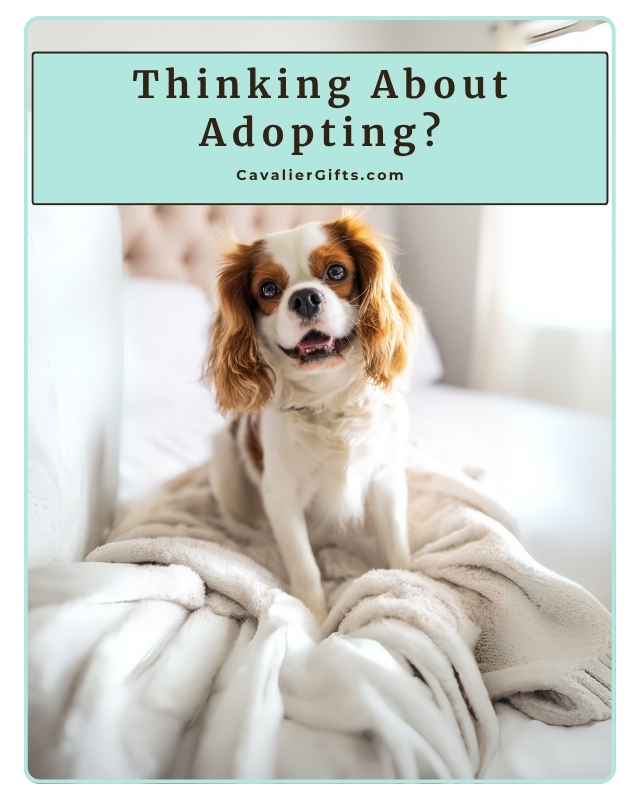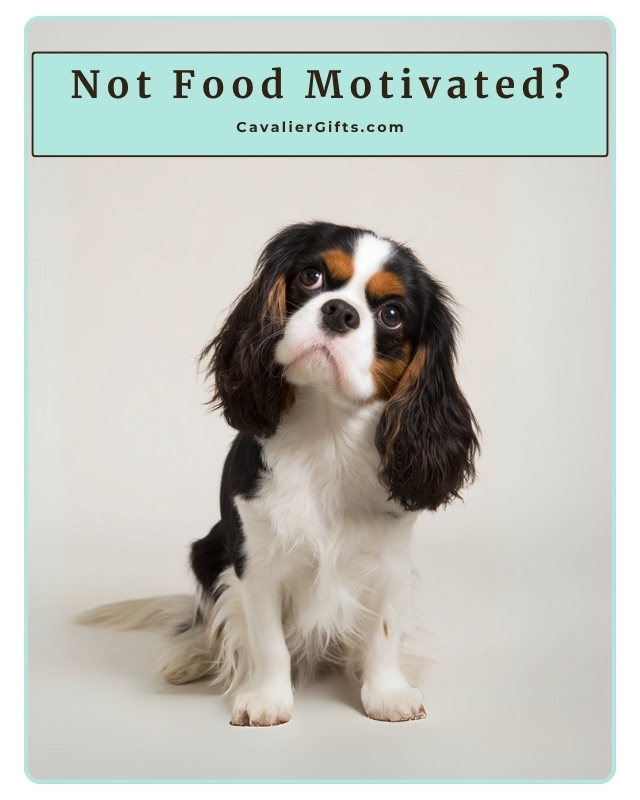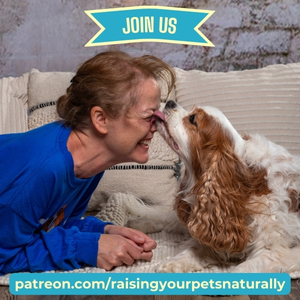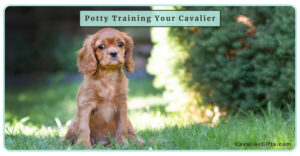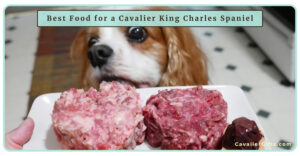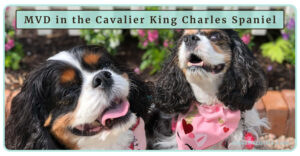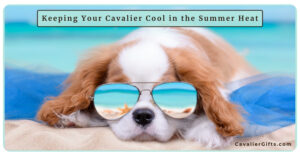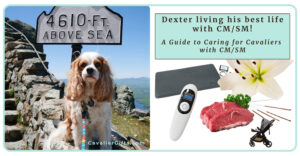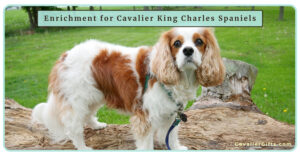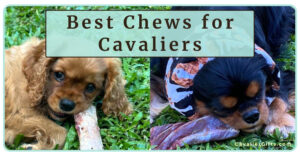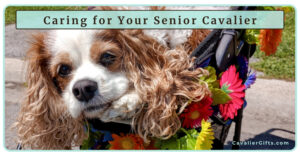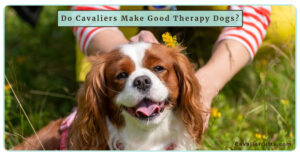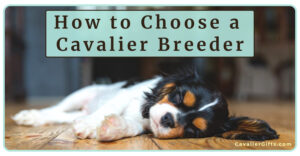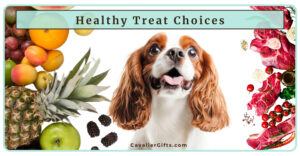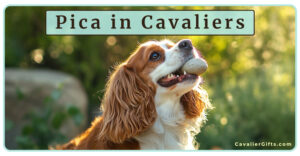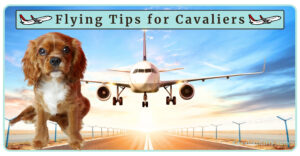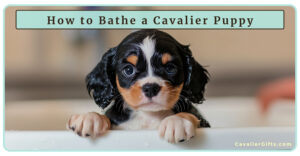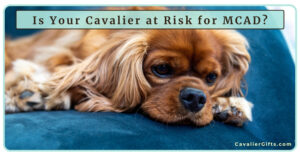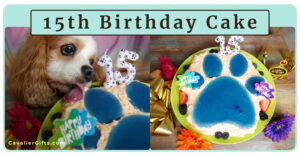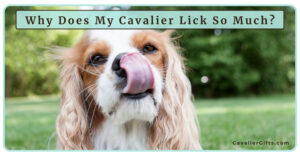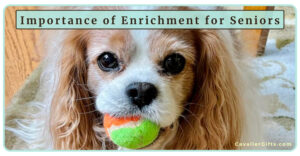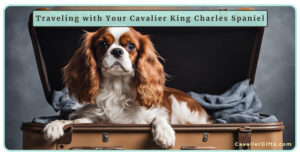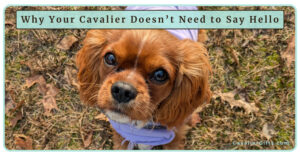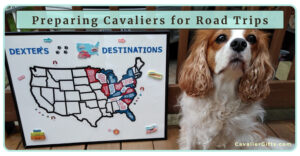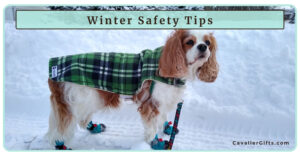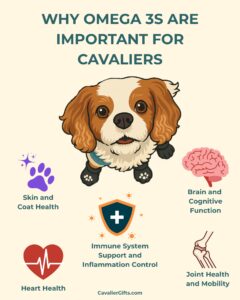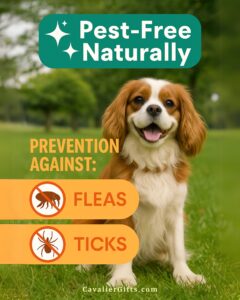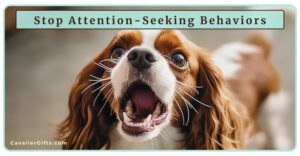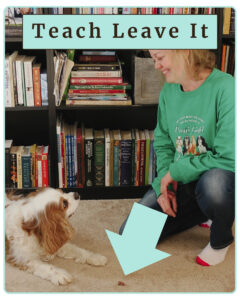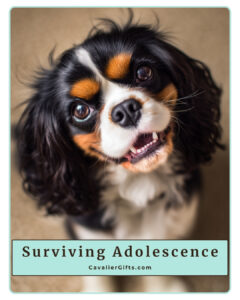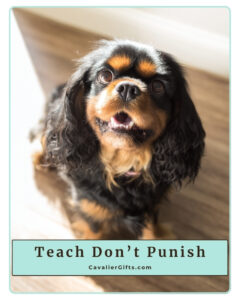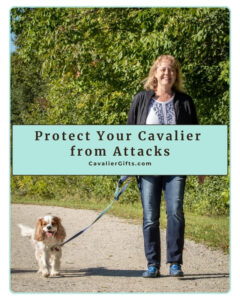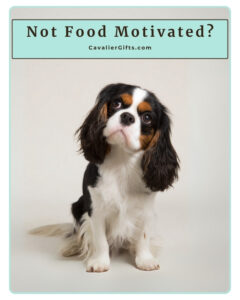Category: Blog
Cavalier Gifts & Blog: Everything for Your Royal Companion. We all love our Cavalier King Charles Spaniels. Cavalier Gifts & Blog offers the perfect gifts and expert care tips to keep your Cavalier happy and healthy. Explore unique Cavalier gifts, enrichment ideas, fresh feeding guides, training advice, and more! #CavalierGifts
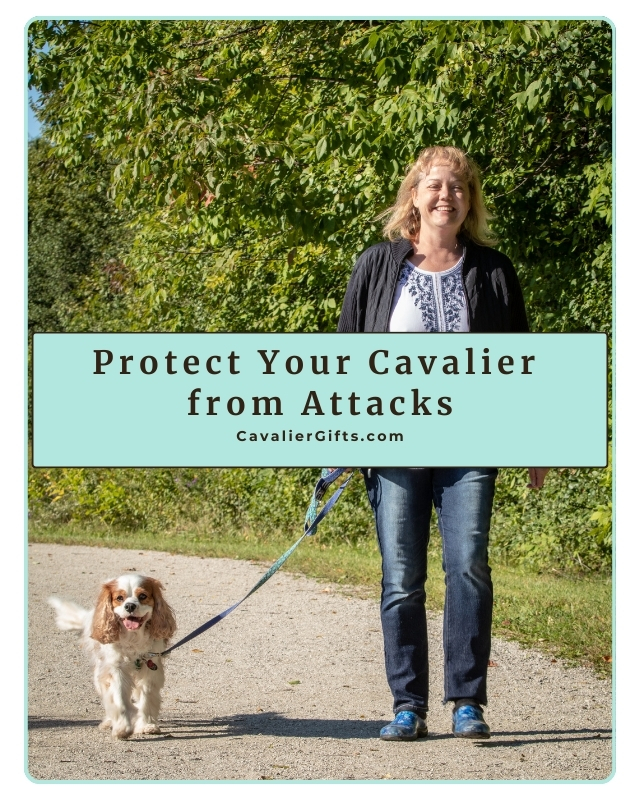
How to Protect Your Cavalier King Charles Spaniel from Off Leash Dogs and Dog Attacks (Early access for our Patreon community)
What to Do When an Off Leash Dog Approaches or Attacks Your Cavalier


Running into an off leash dog in a public area where leash laws are in place is one of those moments that gets my blood boiling. I’ve heard from too many Cavalier families who have gone through this, and sadly, I know several Cavaliers who were seriously injured. Even a couple that didn’t survive. It’s heartbreaking, it’s preventable, and we need to talk about it.
This post is for those of us doing our best to protect our dogs, especially small, gentle breeds like Cavalier King Charles Spaniels, when others decide the leash rules don’t apply to them. Whether you’re out walking your Cavalier, training, or just enjoying your day, here are real life ways to keep your dog safe and what to do if the worst happens.
Why Letting Your Dog Off Leash Puts Others at Risk
Just because your dog is friendly does not mean they should be off leash in public areas. You never know what someone else’s dog is going through. Some dogs are recovering from surgery or illness and need space. Others are working through fear or reactivity and are not ready for sudden greetings. Some are service dogs who may not be wearing a vest but are doing their job. And many dogs, Cavaliers included, simply do not want strange dogs running up to them.
This is why leash laws exist. They are there to protect everyone. Just because your dog wants to say hi doesn’t mean they should get to.
What to Do When an Off Leash Dog Approaches
There is no perfect solution that works in every situation, especially when an off leash dog charges unexpectedly. But being prepared both mentally and physically can make a real difference. These are practical ideas I have taught, used myself, and seen work in real life. While nothing is guaranteed, having a plan in place can help you stay calm, act quickly, and protect your Cavalier as best you can.
Watch the video demonstrations and don’t forget to subscribe to @RaisingYourPetsNaturally for more tips.
Teach a Sit Stay Behind You
One of the most helpful cues I teach is a sit stay with my dog positioned behind me. I start by practicing in low distraction settings and slowly build it up over time. If a dog approaches, I cue my Cavalier to sit and stay behind me, and I step forward to handle the situation. This helps my dog feel protected and keeps them from reacting or escalating the situation.
Throw Treats at the Approaching Dog
Yes, throw treats right at the dog’s face. It may sound odd, but it works. The goal is to startle the dog and interrupt their focus. Then toss more treats behind them, toward the direction they came from. This often gives you a few seconds to calmly retreat with your Cavalier. I always carry tasty treats for this reason.
Use a Traffic Cop Stance
Turn to face the dog, extend your arm out like a stop sign, and say firmly, “Stop. Go home.” Keep your Cavalier behind you and slowly back away. Some dogs will pause or hesitate if they’re unsure or not aggressive. Keep repeating the phrase and keep your hand out, as you and your Cavalier walk backwards away.
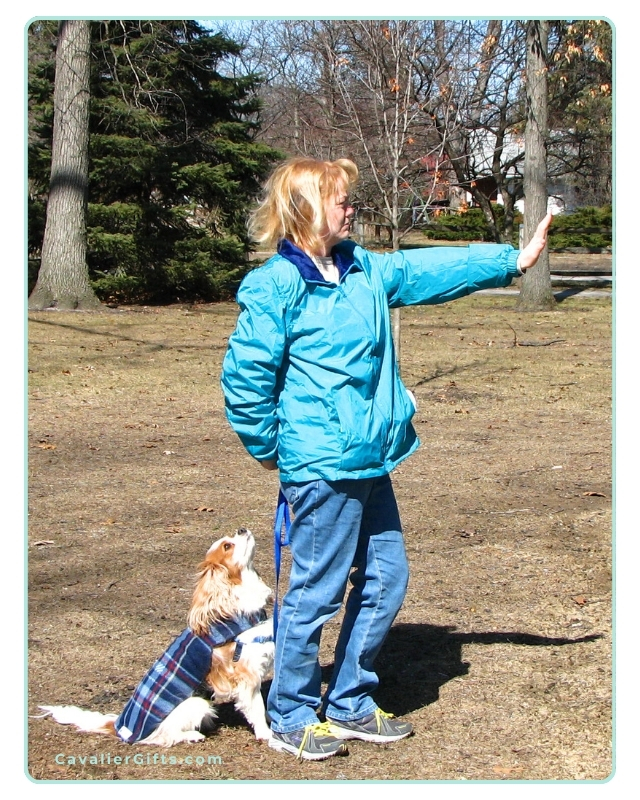

Carry an Air Horn
If your dog is comfortable with noise, an air horn can be a great deterrent. I always condition my dog to hear it at home first and pair it with treats. When needed, a quick blast can interrupt the loose dog’s approach and give you time to move away. It’s one of my go to tools, but only if your dog can handle the sound.
Use an Umbrella as a Visual Block
I train my dogs to be comfortable with umbrellas opening indoors, so they are not startled if I ever need to use one during a walk. If a dog is charging at you, pop open the umbrella toward them. The sudden motion and large shape often causes the dog to pause or back off. If necessary, you can shake it or move it toward the dog as you use a firm, go home, verbal cue.
Carry a Personal Safety Tool
Tools like pepper gel, citronella spray, taser, or even a She’s Birdie alarm can help in urgent moments. Pepper gel has more control than spray, and the alarm can attract attention or startle the other dog. Always practice with these tools and make sure your dog is not afraid of them.
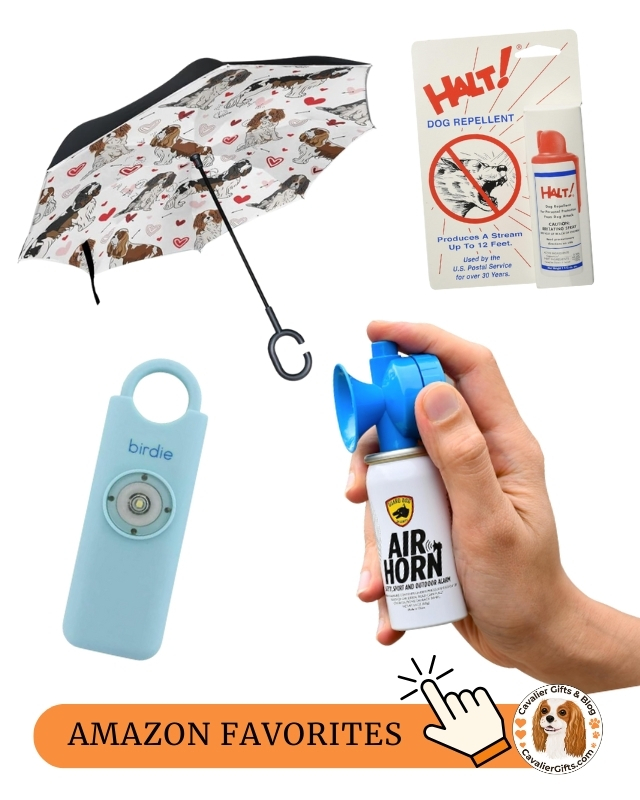

Be Cautious About Picking Up Your Cavalier
It is tempting to scoop up your Cavalier, especially since they are small. But doing so can sometimes make things worse. The approaching dog may jump at you or become more aroused. Only pick up your Cavalier if you feel it will help and if you have a safe place to put them, like a truck bed, behind a fence, or even inside a garbage bin if it means protecting them. Use extreme caution if trying this.
If You’re Walking More Than One Cavalier
This is also one of the reasons I usually prefer walking one dog at a time. It helps me stay more aware, react quickly if something happens, and really connect with the dog I’m with. But I know that’s not always possible, so here’s how to stay prepared when walking more than one.
Walking multiple Cavaliers makes things trickier, especially when a loose dog starts heading your way. It can be harder to control space, stay calm, and manage multiple leashes at once. That’s why I recommend preparing a plan ahead of time if you regularly walk more than one Cavalier.
If possible, practice sit stays with each dog individually first, then gradually build up to group stays. Teach your Cavaliers that standing behind or beside you means safety. If you see a loose dog approaching, calmly guide all your Cavaliers behind you and keep their leashes in one hand while using your other hand to deter the loose dog, whether that’s with a verbal cue, a stop signal, or a safety tool.
This is also where tools like a treat toss or umbrella can really help, because they create distance without needing to physically wrangle multiple Cavaliers. And if things feel too tight, do not hesitate to turn and walk away together. Getting distance is often the safest move when you have more than one dog depending on you.
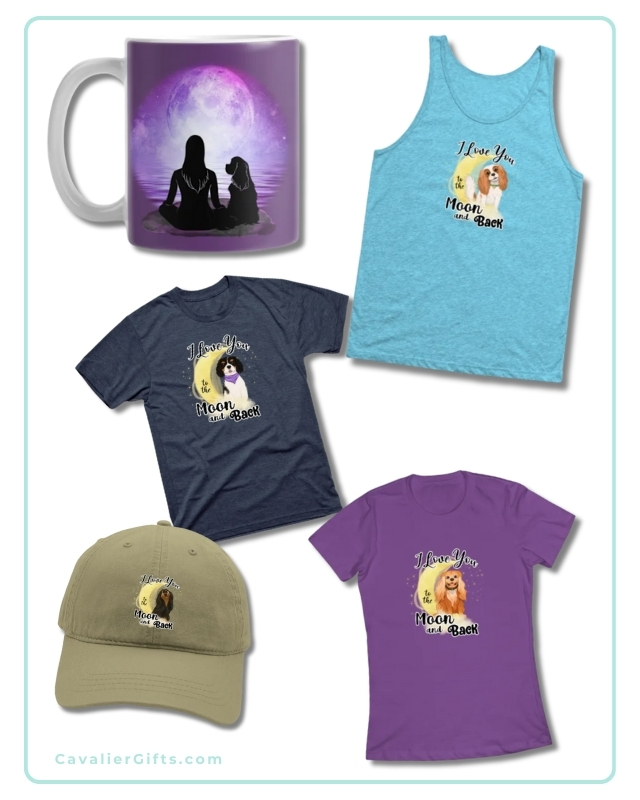

What to Do If a Dog Attacks Your Cavalier King Charles Spaniel
No one wants to think about this part, and I truly hope you never face it. But if a loose dog attacks your Cavalier, your priority becomes stopping the fight as quickly and safely as possible. This is not about hurting another dog out of anger. It is about protecting your own Cavalier King Charles Spaniel from serious harm or even death.
If you have a tool in hand, such as a stick, an umbrella, or pepper gel, use it to target the attacking dog’s face. Aim for the eyes, nose, or mouth. The goal is to interrupt the attack and create enough of a pause to safely separate the dogs. You may only have a second or two, and you need to respond fast and as hard as you can to protect your Cavalier.
If you are physically trying to break it up without a tool, one method is to grab the attacker’s back legs and swing them away from your dog. This can throw them off balance and give you a chance to create space. Do not reach for collars or faces with your hands. That is the most common way people get bitten during dog fights.
Once the dogs are separated, move your Cavalier to safety right away. If possible, secure the attacking dog so they cannot come back. Then take photos, report the incident, and document everything as soon as you can. Even if your Cavalier seems okay, a vet check is always important. Many bite wounds are deeper than they look.
Helping Your Cavalier Recover Emotionally After an Attack
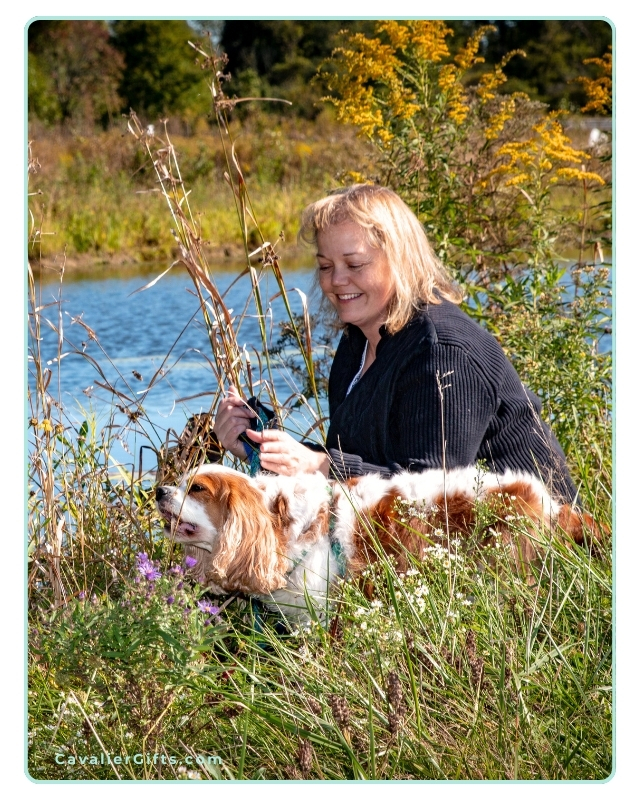

This is one of the most important parts of the process, and it is often overlooked. A Cavalier who goes through a dog attack may seem fine physically, but emotionally, they can lose trust in the world around them. I have worked with dogs who suddenly freeze on walks, avoid places they once loved, or become uneasy around other dogs even from a distance.
Start by giving your Cavalier time to decompress. Skip your regular walks for a few days and let them rest in the comfort of home. The goal is to help them feel safe again while things settle emotionally and physically. Keep their day simple and supportive.
At home, bring in confidence through simple enrichment. Food puzzles, nose games, and easy trick training can help rebuild a sense of control and engagement. These games in a familiar space can make a big difference.
When you are ready to start walking again, choose quiet places where you are unlikely to run into other dogs. Early mornings, empty parking lots, or quiet nature trails can be good options. Let your Cavalier set the pace. If they want to pause and look around or head back early, that is okay.
Pay attention to the progress. If your Cavalier walks a little farther, seems more confident, or looks at you for guidance, tell them how smart they are. Praise, treat, give a chest scratch. That is how trust returns, little step by little step.
This healing process takes time. That is exactly why I created Supporting Your Sensitive Dog: Gentle Steps Toward Confidence. If your Cavalier is showing signs of fear or hesitation, this course will guide you through gentle, trust based steps to help them feel safe again.
You’re Not Overreacting
Your Cavalier deserves to walk safely. You deserve to walk without fear. And if someone chooses to ignore leash laws, you are completely within your right to protect your Cavalier, using your voice, your body, your training, or any tool you need.
So stay prepared. Be proactive. And most of all, trust your instincts. You’ve got this.
|
|
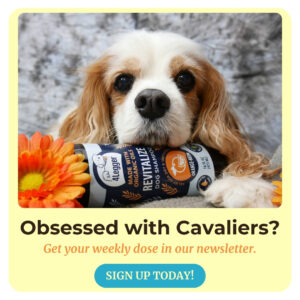        
|
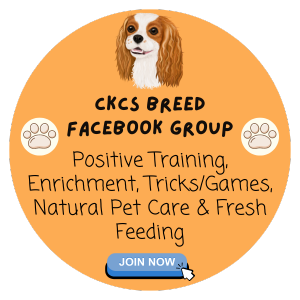        
|
Google Ad Below


What Is Positive Reinforcement Dog Training? Why It Works for Cavalier King Charles Spaniels and All Breeds (Early access for our Patreon community)
Kind, Reward-Based Training for Cavalier King Charles Spaniels and All Breeds











When people hear the term positive reinforcement, they sometimes picture a dog who only listens if you have food in your hand. Or they think it means never setting boundaries. I’ve had people say things like, “I don’t want to spoil my dog,” or “I heard that’s just bribing with treats.” But the truth is, positive reinforcement training is science-based, relationship-focused, and one of the most effective ways to help dogs feel confident and understand how to live successfully in our human world.
And it’s not just for Cavaliers. This approach works for every breed, every age, and every behavior challenge.
Let’s break down positive reinforcement dog training in a simple and practical way.
What Positive Reinforcement Dog Training Really Means
Positive reinforcement means adding something your dog enjoys immediately after they do a behavior you want to see again. That reward could be healthy dog treats, a toy, praise, a chance to sniff, or access to something fun. It doesn’t have to be a treat every time, but food is often the easiest and most meaningful place to start. If it’s going to be rewarding for your Cavalier, they decide. I mean, my Mom might think a slice of cherry pie is a good reward, but I don’t even like cherry pie. I’d need a slice of chocolate cake!
This type of training is grounded in how all animals learn, including us. When a behavior is followed by a good outcome, we’re more likely to do it again. Your dog sits, you give them a treat. Your dog walks calmly by your side, you let them go sniff a log. That’s positive reinforcement. You’re not spoiling them. You’re reinforcing behavior you want to see more of, and they get something pleasant in return.
How Dogs Actually Learn
Dogs don’t come into our homes already knowing how to live in them. They don’t know what “sit” means. They don’t know they shouldn’t jump on guests or grab food off the counter. Just like us, they learn by doing, and by figuring out what works.
Dogs learn through repetition. They make connections between what they do and what happens next. If they sit and a treat shows up, they’re more likely to sit again next time. That’s positive reinforcement. We’re showing them that their choices matter and that doing the thing we like leads to something they like.
When we use positive reinforcement, we’re not just trying to get obedience. We’re helping our dogs understand how to live in our world in a way that feels safe and rewarding to them. They’re not learning because they’re afraid of getting it wrong. They’re learning because they feel good getting it right.
And that’s what builds real, long-lasting behavior.
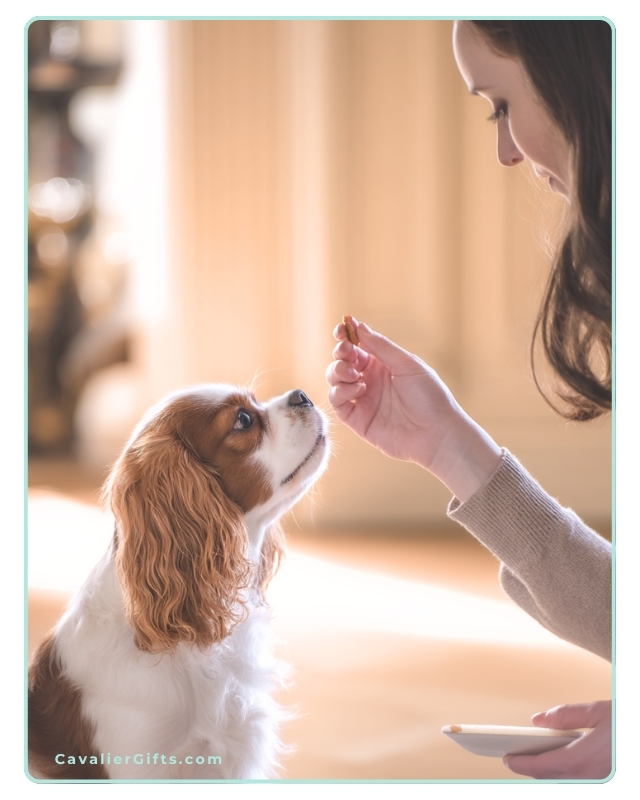

Luring Training Is Teaching—Not Bribing
At the start, we often use a food lure, like holding a treat near your dog’s nose to help them learn how to sit or lie down. We slowly move that treat in a way that encourages the action we want, like guiding their head up and back until their butt hits the ground.
That’s not bribing. It’s teaching. We’re showing them what we’re looking for.
After a few short sessions, we continue practicing the same way. Lure the sit. Reward the sit. Once the dog is starting to understand it, we ask them to follow our empty hand the same way. If they sit, we reward. Now they’re doing the behavior without seeing food first.
Once that’s going smoothly, we add the cue. Say “Sit,” move your empty hand like before, and when their butt hits the ground, reward it.
Over time, we fade the hand movement so that “Sit” becomes all they need to hear. The behavior is now on cue, and your dog learned it in a clear, kind, and effective way.
Dogs Don’t Generalize—They Need Practice in New Places
One of the biggest things people miss is that just because your dog knows how to sit in the living room doesn’t mean they know how to do it in the yard, at the vet’s office, or around a group of children. Dogs need practice in new environments. They need help when distractions are high or when they’re feeling unsure.
That might mean going back to the basics in new places. Using a treat to lure a sit at the park isn’t spoiling your dog. It’s helping them succeed in that moment. You’re helping them learn how to do something they already know, but in a place that’s harder or more distracting.
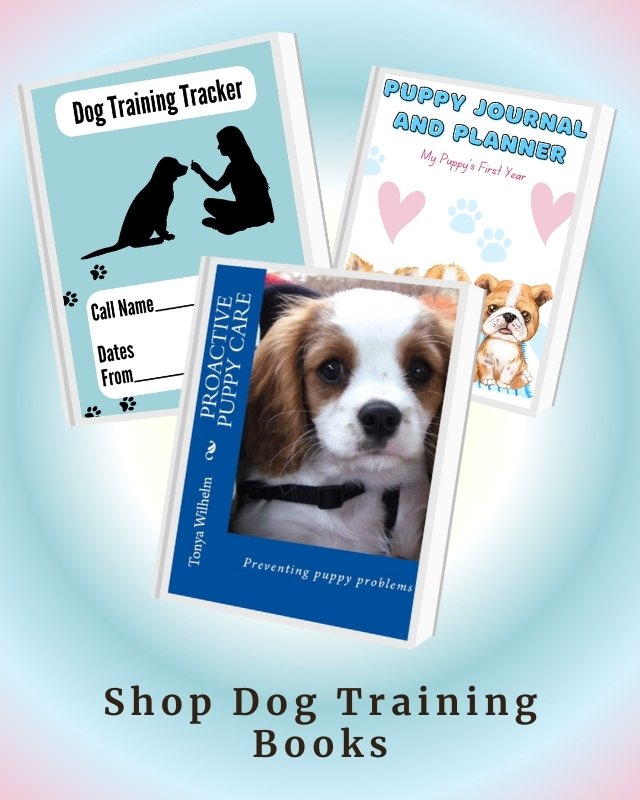

Why Positive Reinforcement Works for Cavalier King Charles Spaniels and All Breeds of Dogs
Cavaliers are sweet, sensitive, and deeply tuned in to their people. They often respond beautifully to kind guidance and struggle with harsh corrections. A raised voice, leash jerk, or even a stern look can shake their confidence and cause them to shut down.
But this isn’t just about Cavaliers.
Every dog, whether they are a bouncy Labrador, a headstrong terrier, a fearful rescue, or a playful senior, benefits from positive reinforcement dog training. You’re not just teaching skills. You’re building a good relationship. You’re helping your dog feel safe to try new things.
Positive dog training encourages curiosity instead of fear. It helps build lasting behavior in a way that feels good for both you and your dog.
The Risk of Punishment-Based Dog Training
Harsh training methods may seem like they work quickly, but they come with a huge cost. Dogs trained with physical corrections, yelling, or intimidation often show signs of stress, like lip licking, yawning, cowering, or even shutting down completely. They may stop doing the “bad” behavior, but not because they learned something better. They stop because they’re afraid to try.
Studies have shown that punishment-based dog training methods can increase anxiety and reactivity, and even lead to aggressive behavior in some dogs. It doesn’t teach what to do, it just teaches the dog what not to do, without giving them tools to succeed.
I’ve worked with so many families trying to rebuild trust after their dog was trained with punishment. That kind of fallout is hard to undo.
You Don’t Have to Carry Treats Forever
A common concern I hear is, “Will I always need food in my pocket?” The answer is no. As your dog becomes more confident and fluent in a behavior, you’ll reward less often. You’ll also start to mix in other rewards, like praise, sniffy walks, or play.
But here’s the thing, dogs, like us, still appreciate being recognized for a job well done. I still praised Dexter and gave him treats into his senior years. Not because I had to. But because I wanted to reinforce the connection we built over a lifetime of learning together.
You’re not creating a treat-dependent dog. You’re building a dog who trusts that good choices lead to good outcomes.
If you want to teach your dog real life manners in a kind, clear, and effective way, take a look at my Manners, Life Skills, and Foundation Training Course. It’s self paced, easy to follow, and designed to help your dog build everyday skills with confidence. You’ll learn how to prevent common problems before they start, teach polite behavior step by step, and create calm, positive routines that work in daily life. I personally answer questions, give feedback, and support you as you go through the course.
Why Positive Dog Training Works for Behavior Issues Too
Positive reinforcement is not just for basic training or fun dog tricks. It’s also one of the best ways to work through real behavior issues like jumping, barking, reactivity, anxiety, and fear-based behaviors.
A big part of dog behavior modification is emotion. When a dog is barking or lunging, they’re not just being “bad.” They’re usually feeling overwhelmed, scared, frustrated, or unsure. If we only try to stop the behavior without addressing how the dog feels, we’re not really helping them.
Positive reinforcement gives us a way to change those emotions. We teach our dogs that good things happen when they make calm, safe choices. Over time, they start to feel more relaxed in situations that used to be stressful. That change from fear to comfort, from confusion to understanding, is what creates real, lasting change.
Instead of just trying to stop the behavior, we ask, “What is my dog feeling?” Then, “How would I like them to feel instead?” and “What do I want them to do instead?” From there, we adjust the situation so we can meet all those needs and teach the new behavior in a kind, clear way. The more your dog practices that skill in the right setting, the more confident they become. And that’s where things really start to turn around.
What Your Dog Really Needs From You
At the heart of it all, positive reinforcement dog training is about more than treats. It’s about empathy. It’s about understanding how your dog sees the world and helping them learn in a way that clicks.
It’s about setting them up for success and guiding them toward the behaviors you want. Not through fear, but through trust, patience, and connection.
That’s what I want for Stewart. That’s what I wanted for Angel Dexter. And that’s what I want every dog to have, training that feels good, makes sense, and builds a life rooted in partnership, not power.
Keep it positive. Keep it patient. Keep it proactive.


|
|
        
|
        
|
Google Ad Below
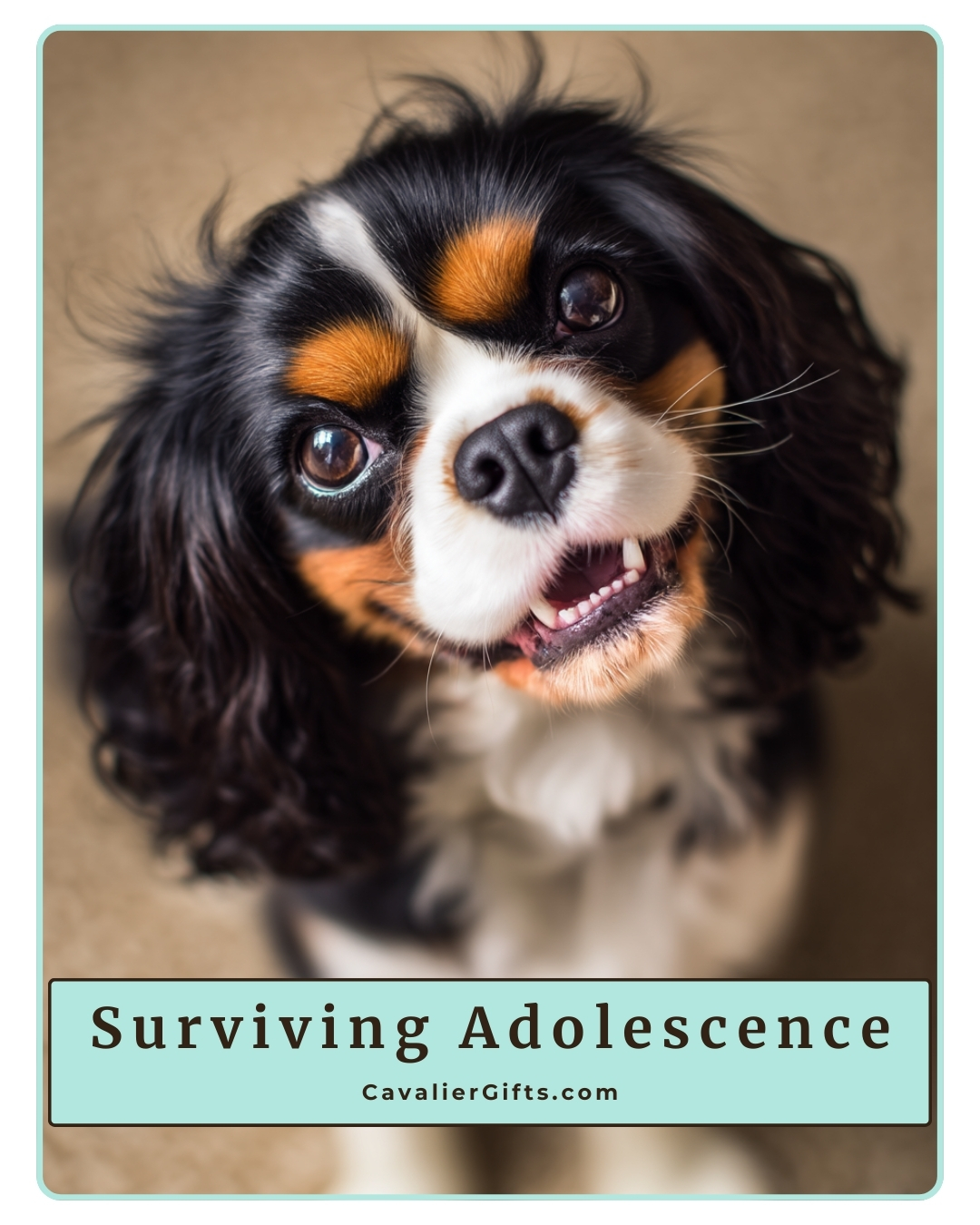

Surviving Your Cavalier King Charles Spaniel’s Adolescence | At What Age Do Cavaliers Calm Down? (Early access for our Patreon community)
Your Cavalier King Charles Spaniel’s Teenage Phase
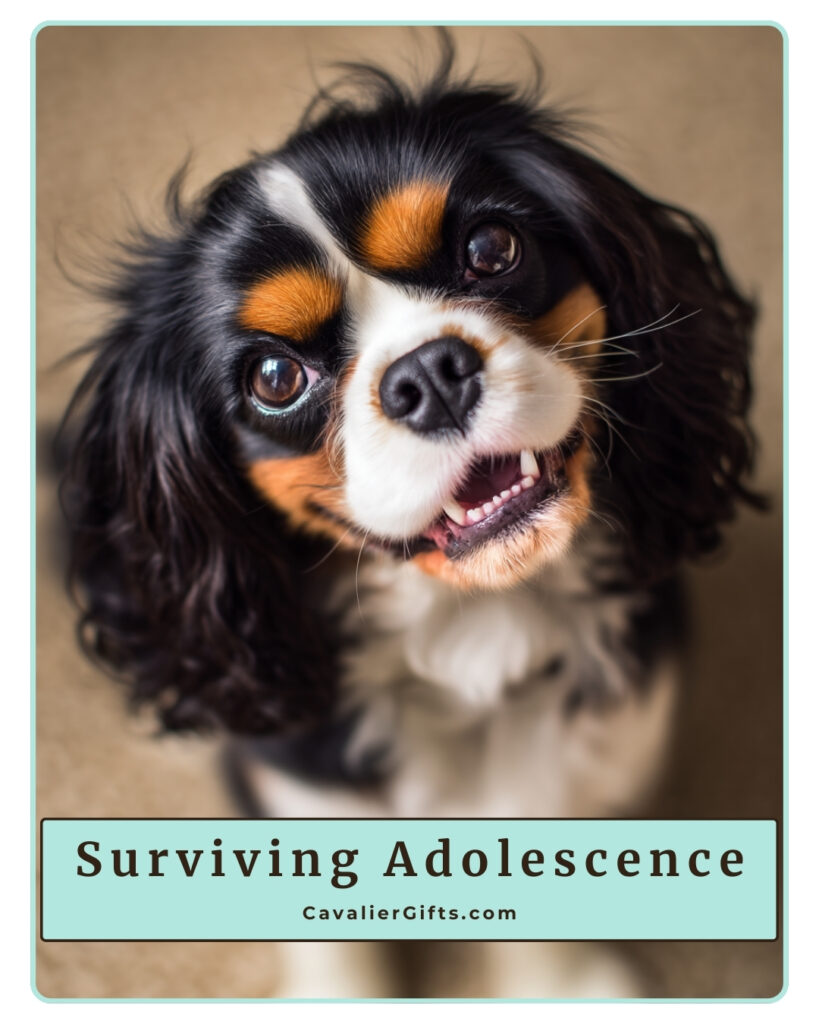










Right now, Stewart, my Cavalier, is about 10 and a half months old and is in full-blown teenager mode. I can tell you firsthand that adolescence is real. Stewart has energy for days, wild bursts of zoomies, and a mischievous sparkle in his eyes that keeps me on my toes. My mom, who adores him, often comments, “He is always getting into trouble!” (Of course, to me, it is not real trouble. It is boredom, enthusiasm, and a young dog who is eager to interact and explore.)
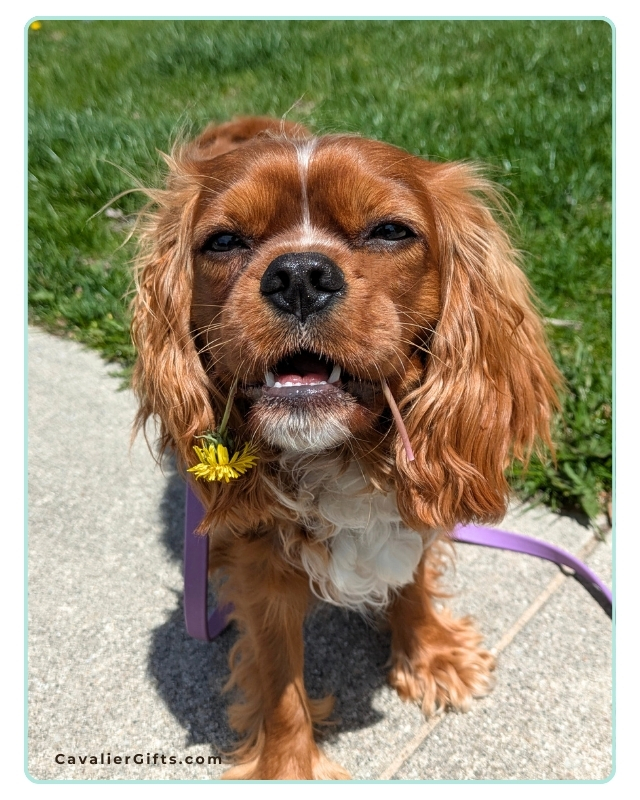

She often compares him to my late Cavalier, Dexter, who lived to be 15 years old. In her memory, Dexter was the perfect, calm little gentleman. And he was, but only after years of growing up. It is easy to forget that Dexter had his own crazy adolescent phase, too. I still remember the day I found myself saying, “You are going to eat, you are going to potty, and you are going to bed!” Sometimes, when puppies get extra wild, it is not even about training. They are simply overtired and need help settling down. Just like toddlers, sometimes they push through their exhaustion and get even more wired.
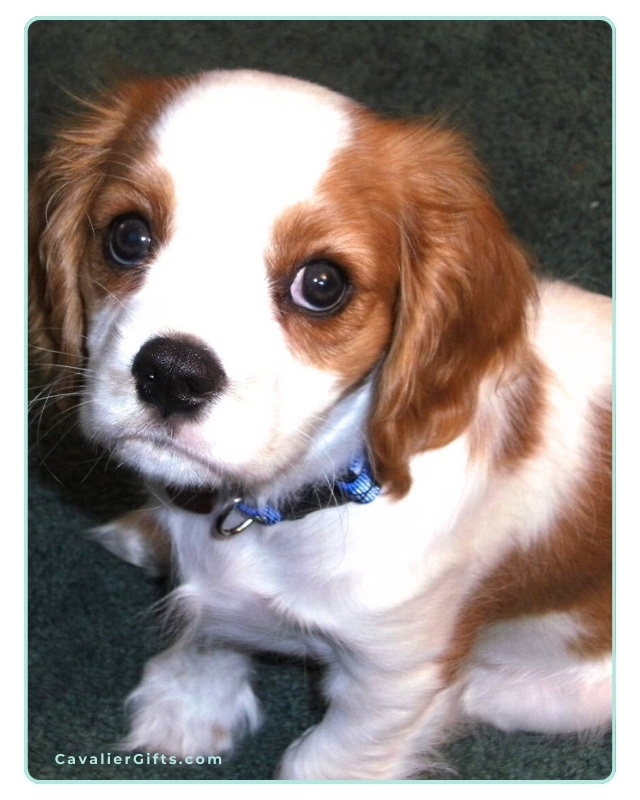

If you are going through the teenage years with your Cavalier right now, you are not alone. And no, you did not do anything wrong. Adolescence is a natural stage in a dog’s development. In Cavaliers, it usually starts when those puppy teeth begin falling out (around four to six months old) and can last until about eighteen months, give or take depending on the dog.
During this phase, your Cavalier might:
- Forget their basic training
- Start jumping up more
- Become mouthier and more vocal
- Seem to ignore you sometimes
- Have random bursts of wild energy (we call them “zoomies”)
- Get into things they never bothered with before
- Show frustration or impatience more easily
Does that sound familiar?
It is important to remember that your Cavalier’s brain is still developing. Just like human teenagers, they are caught between puppyhood and adulthood. Their impulse control is not fully in place yet. The good news? This phase is temporary. And your patience and guidance right now will shape your Cavalier for the rest of their life.
Here is how I am helping Stewart (and helped Dexter before him) navigate this time:
- Stay Consistent with Positive Dog Training: Even if your Cavalier seems to have forgotten what “sit” or “stay” means, keep practicing. Short, daily sessions with positive reinforcement go a long way. Stewart and I do a lot of quick “name games,” sits, hand targets, and polite walking games to keep his brain engaged.
- Build in Play and Enrichment: A bored adolescent dog is a mischievous dog. I make sure Stewart has plenty of fun activities like sniffy walks, find-it games, fetch sessions, and interactive toys. Play is not just fun, it is a training tool. A dog that plays with you is a dog that trusts you.
- Manage the Environment: I always try to be proactive with management first. If I think Stewart might start getting rowdy or restless, I plan ahead. Before I get busy, I will take him for a nice walk, do some training or play a game before I need to settle in. Then, I’ll provide him with something to keep him busy, like a snuffle mat, chew toys or licky mat. That way, he already has something to focus on instead of looking for ways to entertain himself. Managing the environment is not about waiting for problems to pop up. It is about setting your Cavalier up for success before trouble starts.


Are you looking for simple, positive ways to guide your Cavalier through training and daily life? 📘 These are some of the books I created for real pet parents who want to stay organized, consistent, and connected. Available now in Amazon. - Provide Enough Rest: After Stewart works on his snuffle mat, chew toy, or licky mat, and has had a little training or a nice walk, he is usually ready to settle. That is when he curls up for a siesta at my feet while I do my work. Remember that story about Dexter? Sometimes the wild behavior we see is not from a lack of exercise. It is from being overtired. Puppies and adolescent Cavaliers still need a lot of sleep throughout the day. Building in scheduled downtime helps them reset and recharge before they get into trouble from being too tired to make good choices.
- Focus on Trust and Bonding: During a dog’s adolescence period, it is easy to get caught up in the frustrating moments when your Cavalier is ignoring you, getting too wild, or pushing boundaries. But I always try to remind myself that every interaction with Stewart is an opportunity to build our relationship. Trust and connection are even more important during this teenage stage. Adolescence is a time when Cavaliers are figuring out the world and deciding who and what they can count on. I want Stewart to know that I am always safe, fun, and trustworthy. That way, when things get tricky, like going to the veterinarian or navigating a new place, he will look to me for guidance and reassurance. The stronger the bond we build now, the more confident and connected he will be as an adult.
- Keep a Sense of Humor: Adolescent dogs can be frustrating at times, no doubt about it. But it also brings some of the funniest, most joyful memories. Stewart’s goofy antics, the way he proudly carries a pinecone, his dramatic “flops” when he does not get his way, these are the moments I know I will smile about years from now.
If you are raising a Cavalier King Charles Spaniel and feeling overwhelmed by the ups and downs of adolescence, you are not alone. This stage can feel overwhelming on some days, but every patient, playful, and consistent moment you put in now is shaping your Cavalier’s future. All the work you are doing today will help your Cavalier grow into a confident, connected, and loving companion for many years to come.
If you would like more step-by-step help through this stage, I would love for you to join us in our Manners, Life Skills, and Foundation Training course. Inside the course, I walk you through building polite greetings, calm walking, settling skills, and helping your Cavalier stay more focused and connected with you. It is all about giving you the tools to guide your Cavalier through adolescence and beyond with patience, confidence, and fun.


At What Age Do Cavaliers Calm Down?
If you are raising a young Cavalier King Charles Spaniel and wondering when your Cavalier will calm down, it is a common question during the teenage phase. Cavaliers usually start to settle after they move through adolescence, which can last until around eighteen months to two years of age. Some Cavaliers might take a little longer depending on their personality and energy level.
Maturity comes with time, but it also comes with the foundation you build along the way. Positive training, daily routines, enrichment, plenty of rest, and building trust all help your Cavalier develop into a calmer and more confident companion. It is not something that happens overnight, but it does happen.
You have got this! Stay patient, stay positive, and focus on the progress you are making together. It is not about being perfect. It is about showing up, doing the work, and building a strong relationship one day at a time.
What has your Cavalier been doing lately that makes you say, “Yup, we are in the teenage stage”? I would love to hear your stories in the comments!
|
|
        
|
        
|
Google Ad Below
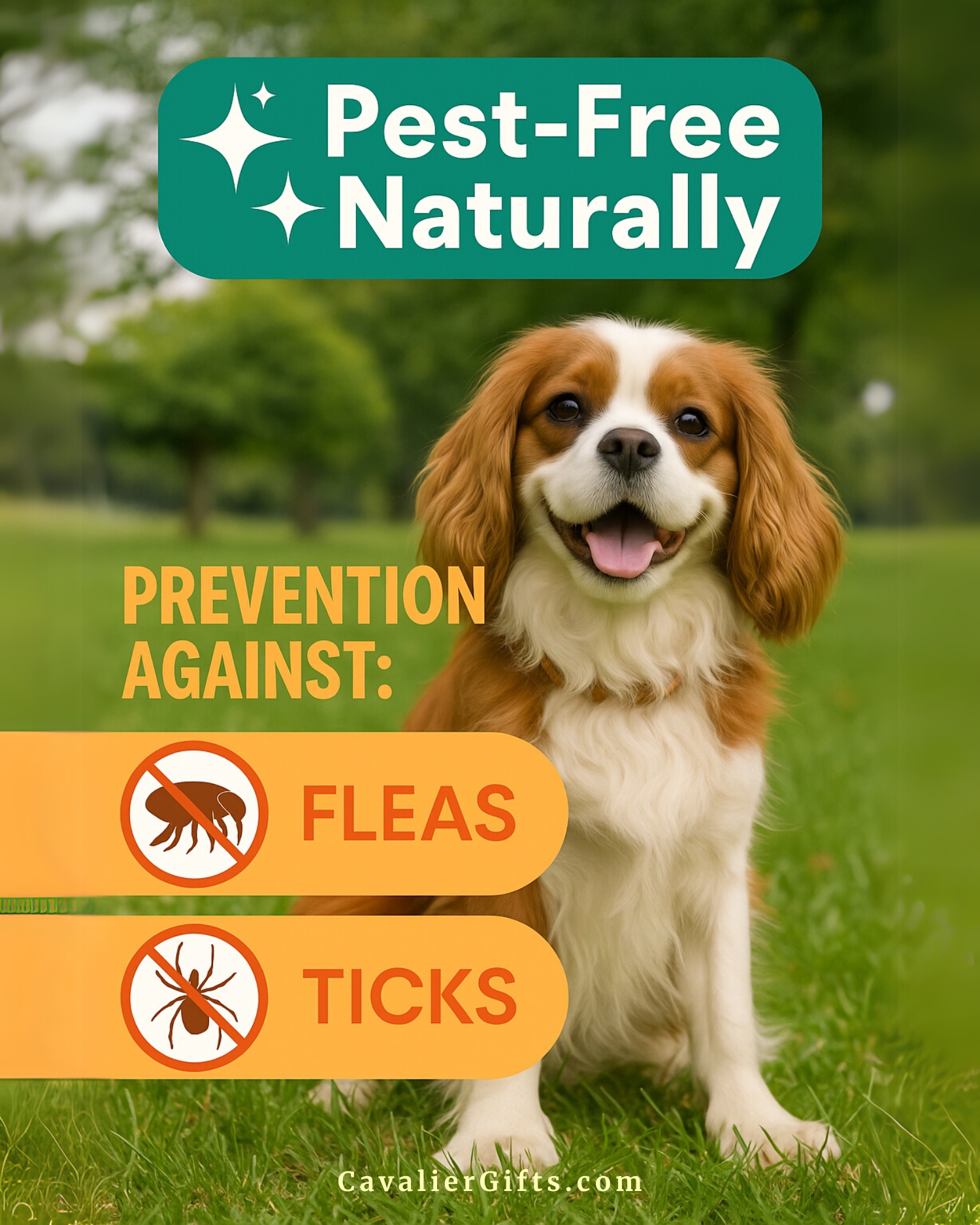

Natural Flea and Tick Prevention for Cavalier King Charles Spaniels (Early access for our Patreon community)
Gentle, Safe, and Effective for Our Sensitive Cavaliers
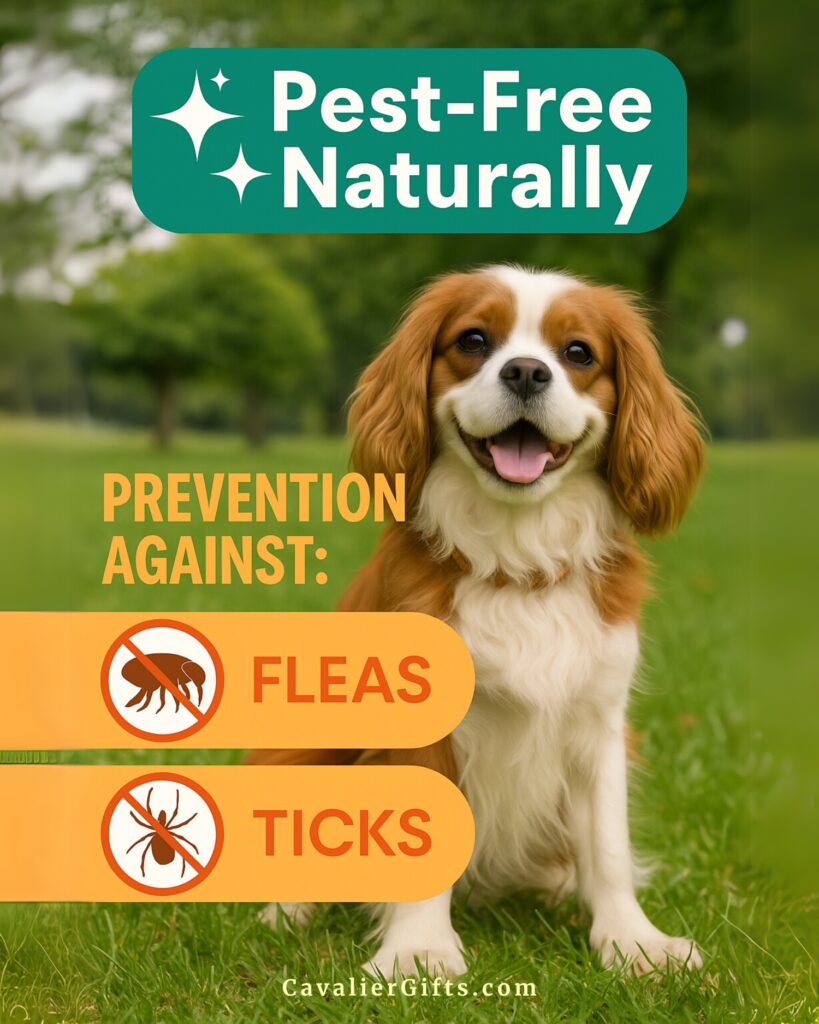










Fleas and ticks. Just hearing those words makes me itch. But as a natural Cavalier Mom, I’ve always been cautious about what I put on or in my dogs, especially with delicate and sensitive breeds like Cavalier King Charles Spaniels. These little sweet hearts often have sensitive skin, luxurious coats, and sometimes underlying conditions like Chiari malformation or syringomyelia, which can make them more vulnerable to adverse reactions.
I’ve been on this natural journey for years, first with Dexter and now with Stewart. Along the way, I’ve learned that staying chemical-free when it comes to flea and tick care is absolutely possible, it just takes a little planning and a lot of label reading.
This is the natural flea and tick routine I’ve found works best for my Cavaliers.
Why I Choose a Natural Approach for My Cavalier King Charles Spaniels
Conventional flea and tick treatments may offer quick results, but they also come with serious risks. Side effects can range from skin irritation, itching, and digestive upset to more concerning issues like tremors, seizures, and in some cases even organ damage. These are not small concerns.
For a breed like the Cavalier King Charles Spaniel, those risks are even more concerning. Cavaliers are already prone to neurological conditions like Chiari malformation, seizures, tremors, and episodic falling syndrome. I’m especially cautious about using anything that lists seizures or neurological side effects as possible outcomes. It just doesn’t make sense to use a treatment that could trigger the very issues this breed is already vulnerable to.
Choosing a natural approach isn’t about trying to be perfect. For me, it’s about reducing chemical exposure wherever I can and building a thoughtful, layered prevention plan that supports overall health instead of relying on a single product to do it all.
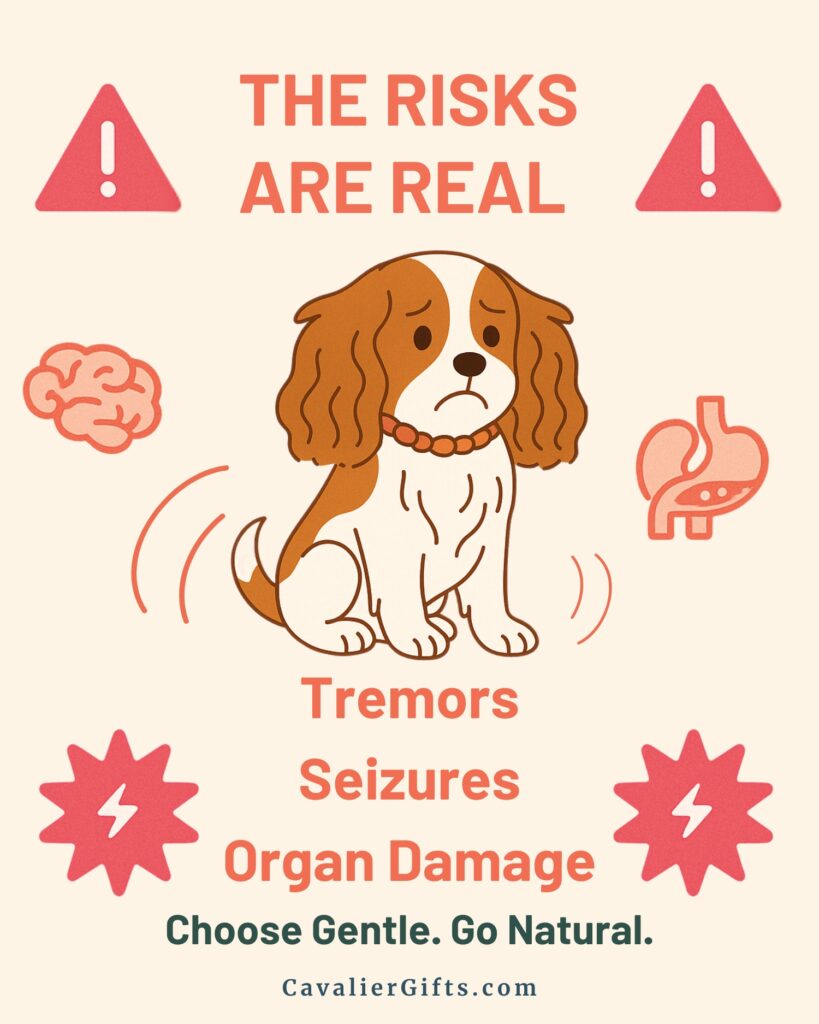

My Natural Flea and Tick Prevention Plan for My Cavalier King Charles Spaniel
1. Regular Grooming and Bathing-I bathe Stewart every three to four weeks using a safe, gentle dog shampoo made without synthetic preservatives, artificial fragrances, or harsh surfactants. I’ve been using 4-Legger’s USDA-certified organic formulas for years because I trust their ingredient panel and transparency. They have a variety of formulas that help deter ticks and fleas.
Bathing regularly doesn’t just clean your Cavalier. It helps interrupt the flea life cycle. A good soak and lather can wash away flea eggs, dirt, and debris that might attract pests. When I use a shampoo that includes properly diluted essential oils known to repel fleas and ticks, it gives Stewart an extra layer of protection even after his bath is done.
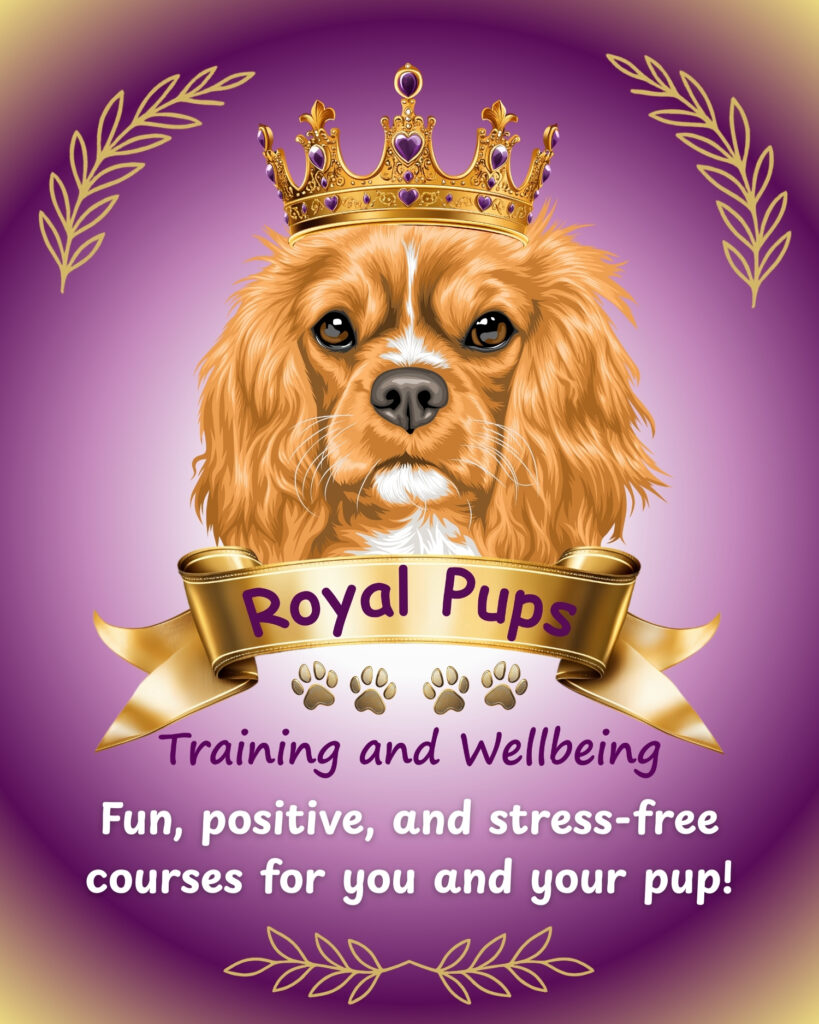

2. Natural Tick and Flea Sprays for Daily Protection-Before every walk, I spray Stewart with a natural flea and tick repellent. I pay close attention to his legs, chest, tail, and belly, basically anywhere that might brush up against grass, shrubs, or wooded areas. These sprays are one of our most important layers of protection, and I use them daily during warm weather or anytime we’re heading into a high-risk area.
Over the years, I’ve rotated between trusted store-bought options and homemade recipes using properly diluted dog-safe essential oils. I always avoid sprays with synthetic preservatives or ingredients that could irritate a dog’s skin.
When I make my own, I tailor the recipe to the season, the environment, and even the behavior of my dog. Dexter, for example, used to try to catch bees, so I avoided blends with oils like rose geranium that might attract them. The key with any natural tick and flea spray is to apply it each time your Cavalier goes outside. These blends are not designed to last for hours at a time, and a quick re-spritz before each outing is what really makes the difference. I keep a bottle near the door so it becomes part of our daily walking routine.
DIY Natural Flea and Tick Spray for Dogs
This is one of my favorite natural sprays to help keep fleas and ticks at bay, without resorting to harsh chemical treatments. It’s simple to make, and you can use it on both your dog and yourself before heading outside.
What You’ll Need:
- 3 ounces distilled water
- 1/4 ounce vodka or grain alcohol (helps disperse oils evenly)
- 1/4 teaspoon vegetable glycerin (moisturizing and helps blend)
Essential Oils:
- 4 drops Cedarwood– repels fleas and ticks while being gentle on skin
- 4 drops Geranium– especially helpful against ticks
- 3 drops Lavender– calming and gently repels insects
- 1 drop Citronella– useful for deterring mosquitoes, fleas, and ticks
- 1 drop Peppermint– offers cooling relief and additional repellent support
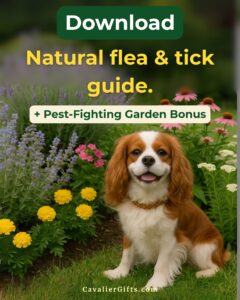

Grab my free Natural Flea and Tick Prevention Guide plus a bonus page on creating a dog-safe garden to help keep pests away naturally. Click to download your free copy!
How to Make It: Add all the ingredients to a 4-ounce (or larger) amber or cobalt blue glass spray bottle. Shake gently to combine.
How to Use It: Before walks or time outside, shake well and lightly mist your dog’s legs, belly, tail, and along the back. Always avoid spraying near the face and eyes. For areas like the ears, chest, or neck, spray a small amount into your hands first, then gently rub it into your dog’s fur. This helps you apply it more precisely and makes sure it reaches the coat and skin. Always apply when your dog is dry for best results.
Storage Tip: Store your spray in a cool, dark place and an amber or cobalt glass bottle helps protect the essential oils from light exposure, which can cause them to break down over time. Shake before each use to keep the oils properly dispersed.


Simple DIY Natural Flea and Tick Spray for Dogs
When I first started making Dexter’s flea and tick sprays, I kept things really simple. I used just distilled water and a few carefully chosen essential oils. Using just distilled water and essential oils is a great option if you plan to make small batches and use them up fairly quickly. It is easy, gentle, and perfect for Cavalier parents who want something simple. You will still need to shake the bottle well before each use, just like with any natural spray.
If you want your spray to blend a little more evenly and stay fresher a little longer, using the above recipe with the grain alcohol and vegetable glycerin can help. Alcohol acts as a natural preservative and helps the oils disperse a little better through the water. Glycerin can also add some moisture to the coat and skin.
Both options are good, it really depends on what fits best with your dog’s needs and your routine. If you are going through the spray quickly, distilled water and oils work just fine. If you want a little more staying power and an extra moisturizing boost, the version with alcohol and glycerin might be a better fit.
You can also check out four of Dexter’s natural flea and tick spray recipes on my Raising Your Pets Naturally blog.
Watch now and don’t forget to subscribe to @RaisingYourPetsNaturally YouTube for more!
Why Different Natural Tick and Flea Sprays Work for Different Dogs
One thing I learned through experience and from chatting with other natural pet parents is that not every spray works the same way for every dog. Some ticks are more common in certain regions and are repelled by specific essential oils. That’s why I rotate between formulas and stay flexible with what I use. If something stops working, I adjust. It’s not failure, it’s just part of the process.
3. Apple Cider Vinegar for Flea and Tick Support-Raw, unfiltered apple cider vinegar (ACV) is another natural tool I like to keep on hand as part of a layered approach to flea and tick prevention. While it won’t kill fleas or ticks, it can help make your dog less appealing to them.
You can make a simple spray by mixing equal parts raw ACV and distilled water in a spray bottle and lightly misting your dog’s legs and belly. Just be sure to avoid the face, and only use it on healthy, unbroken skin. If your dog has any skin sensitivities or open spots, it’s best to skip ACV topically.
You can also add a small amount of ACV to your Cavalier’s food or water. Not all dogs tolerate vinegar well, especially those with sensitive stomachs or urinary issues. It’s also important if you add it to your Cavalier’s water, they also have non-altered fresh water available.


4. Amber Collars for Natural Flea and Tick Repellent Repellant-Another layer is a raw Baltic amber collar. These collars are made from unpolished amber resin that naturally releases aromatic compounds when warmed by your dog’s body. These compounds can help repel ticks and fleas without adding any scent or chemicals to your dog’s skin.
While I wouldn’t rely on them as the only form of protection, I absolutely feel they can help in the overall care to keep our Cavaliers tick and flea free naturally. They’re lightweight, chemical-free, and easy to clip on. With Cavaliers, just make sure the collar sits comfortably behind their ears and doesn’t tangle with their feathering. If your Cavalier has Chiari malformation, this may not be an option if they can’t wear a collar comfortably.
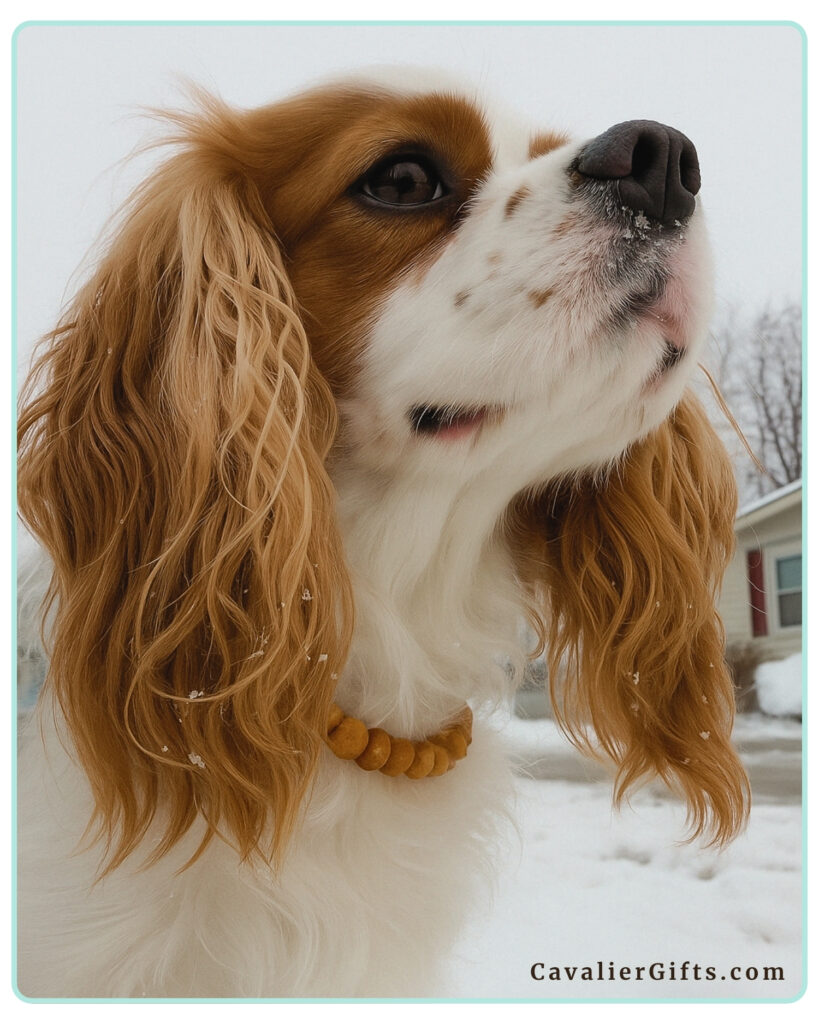

5. Ultrasonic Tick Tags-Another tool to add to your flea and tick routine is an ultrasonic tick tag. There are various brands that make these small devices that clip onto your dog’s collar or harness. They emit a high-frequency pulse that humans and dogs can’t hear, but it’s designed to interfere with a tick or flea’s ability to orient themselves toward your dog.
These tags are scent-free and totally safe for sensitive dogs like Cavaliers. This type of tag is helpful during hikes, trail walks, or visits to areas known for higher tick populations. It’s a simple, noninvasive step that adds an extra layer of protection.
6. Diatomaceous Earth for Natural Flea and Tick Prevention-Food-grade diatomaceous earth is another natural tool I use as part of our flea and tick routine. It’s a fine powder made from fossilized algae that works by drying out the exoskeletons of pests like fleas and ticks. I don’t use it as a primary prevention method, but it’s a helpful layer, especially after we’ve been somewhere with higher pest exposure.
To apply, I lightly sprinkle a small amount down Stewart’s back and gently brush it into his coat, avoiding his eyes, nose, and mouth. It’s best used when your dog is dry and in a well-ventilated area. You can also use it on bedding or around baseboards during flea season as part of a regular cleaning routine.
Watch how I apply it and don’t forget to subscribe to @CavalierTipsandFun YouTube channel for more!
7. Using Garlic to Support Immune Health and Repel Fleas Naturally-Garlic might be controversial in some circles, but when used responsibly, it’s one of my go-to immune support tools. Garlic often gets a bad reputation because in 2000, they did a study on four dogs and gave them an extreme amount of garlic ( about 25 cloves a day for a 25-pound dog), and they had a bad reaction. That’s not even close to how we’d use garlic in a natural, supportive way. You can read the study here.
I started using fresh garlic years ago with Dexter, and it’s something I continue with Stewart now that he’s old enough for it. Garlic supports the immune system and helps repel fleas and ticks from the inside out. I only use fresh, organic garlic, peeled and minced about ten minutes before mealtime to allow the allicin to activate. Then I mix it into Stewart’s food. I never exceed the recommended amount and only feed garlic for up to three days in a row, followed by five to seven days off.
I never use garlic with puppies, pregnant or nursing dogs, dogs with anemia, or those with upcoming surgeries. It’s not a fit for every dog, so I always recommend checking with a holistic vet first.
Garlic Dose For Dogs: The approximate dose of fresh, organic garlic is 1/8 teaspoon for a 5 pound dog, 1/4 teaspoon for dogs between 6 and 10 pounds, 1/2 teaspoon for 11 to 15 pounds, 3/4 teaspoon for 16 to 20 pounds, and 1 teaspoon for dogs between 21 and 30 pounds. Dogs between 31 and 50 pounds can have 1 1/2 teaspoons, and those over 51 pounds can have up to 2 teaspoons.
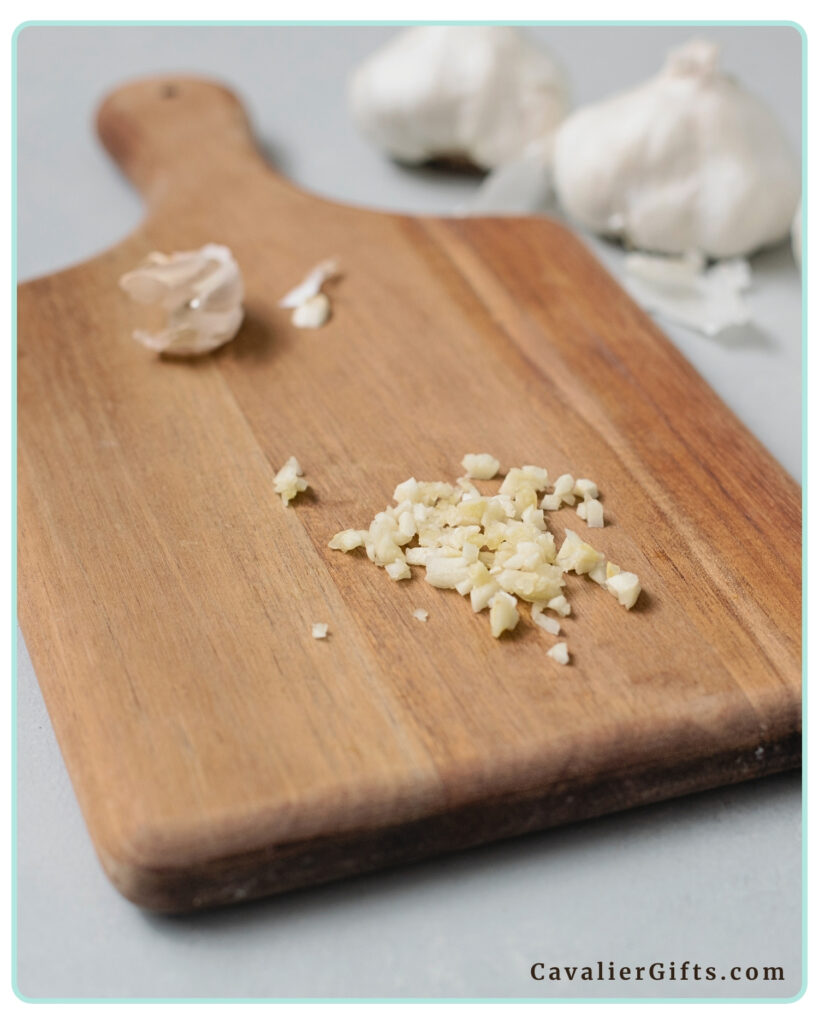

8. Spotting and Removing Ticks and Fleas from Your Cavalier King Charles Spaniel-No matter how many prevention tools we use, I always do a hands-on check after walks or outings, especially during peak tick season. I check Stewart’s paws, armpits, ears, groin area, and the base of his tail. These are the spots where ticks love to latch on.
If I do find a tick, I remove it immediately with a tick remover or fine-point tweezers, making sure to grab close to the skin and pull straight out. Afterward, I place it in a bottle with alcohol and wash my hands. I’ve found this routine not only gives me peace of mind but also helps me stay in tune with any changes in Stewart’s skin or coat.
A Quick Note About Dexter’s Experience
As Dexter was in his late senior years and his neurological condition progressed, I started to notice the occasional flea here and there, more than we had seen in the past. His immune system wasn’t as strong, and that likely made him more vulnerable to pests. This isn’t uncommon in aging dogs or those with health challenges. Their bodies just don’t have the same defenses they once did.
I made it a daily routine to sit with Dexter and go over him carefully with a flea comb and a small jar of alcohol to catch any runners before they could become a real problem. I also stayed on top of sweeping and washing his bedding regularly. Thankfully, it never got out of control, just a flea here and there, but it reminded me how important it is to stay consistent.
It also reinforced why I’ve always chosen to avoid harsh flea treatments. With Dexter’s compromised system, exposing him to chemicals could have caused even more serious issues. Supporting his health naturally, with gentle and consistent care, was always the safest choice for him.
Final Thoughts on Natural Flea and Tick Care for Cavaliers
If you’re just starting your natural flea and tick care journey, start small. You don’t have to change everything at once. Pick one new step, try it, and see how it fits your dog’s life. Read labels. Ask questions. And most of all, give yourself grace as you navigate what feels right for you and your Cavalier.
Cavaliers are worth the extra effort, and with how sensitive they can be, choosing gentle, natural care just feels like the right thing to do.
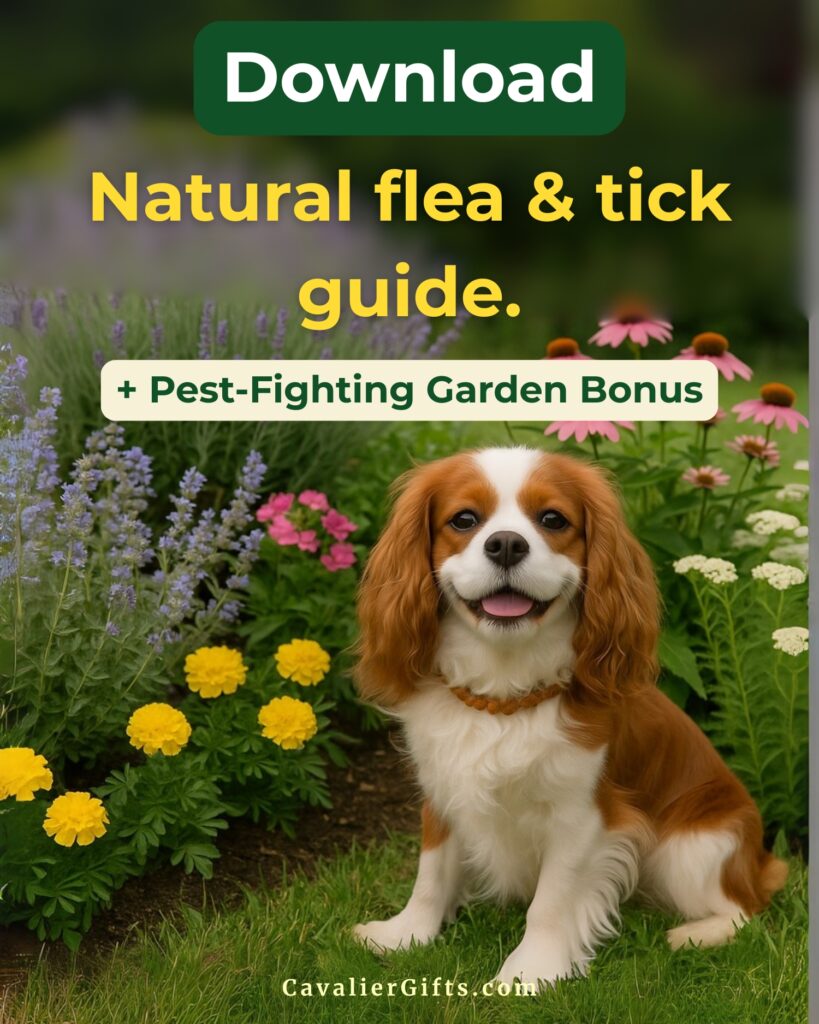

Grab my free Natural Flea and Tick Prevention Guide plus a bonus page on creating a dog-safe garden to help keep pests away naturally. Click to download your free copy!
Google Ad Below
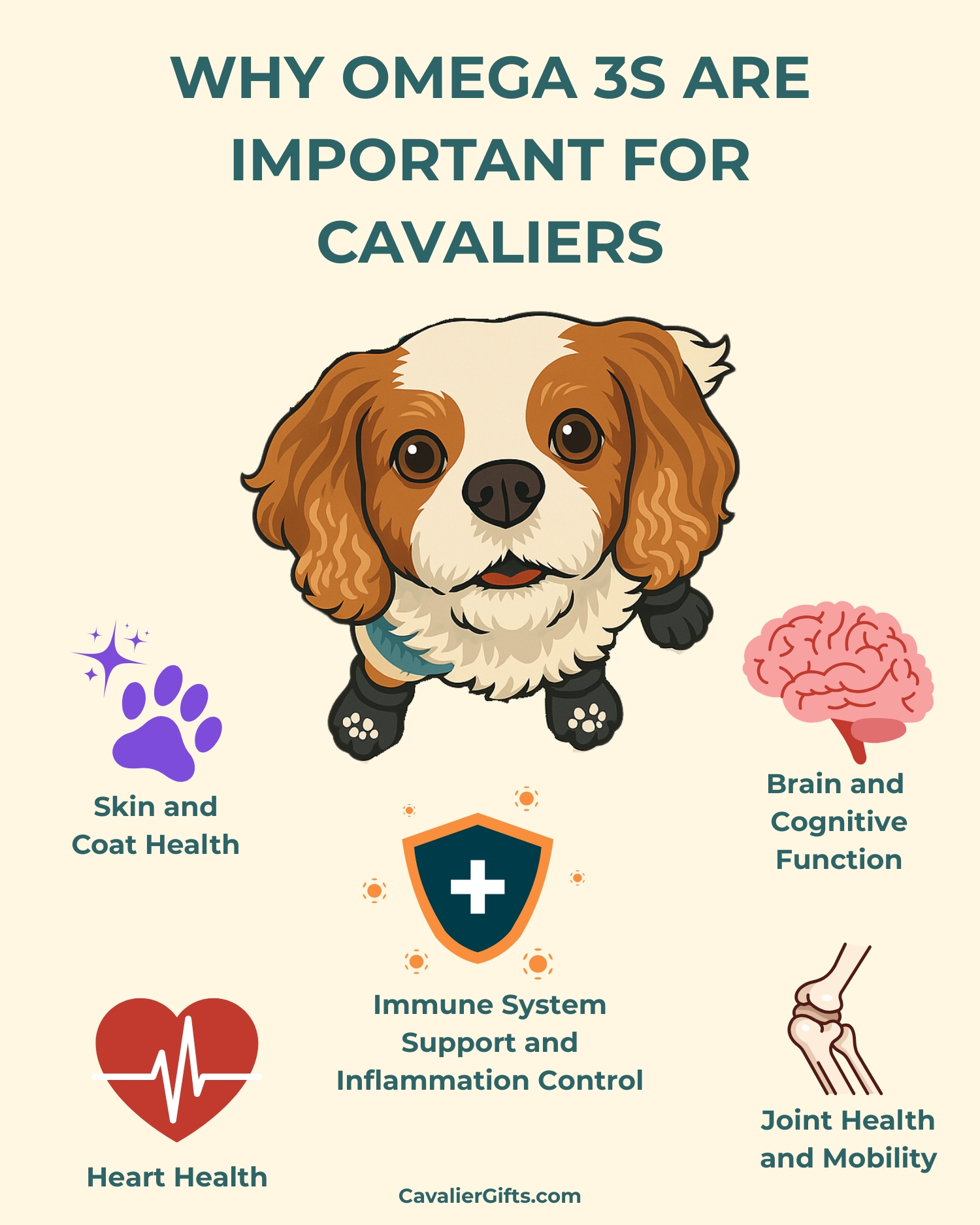

Health Benefits of Omega-3s for Cavaliers (Early access for our Patreon community)
Health Benefits of Omega-3s for Cavaliers











Skin and Coat Health
Omega-3s help maintain a healthy skin, reducing dryness, flakiness, and itchiness. They also improve coat condition, making your Cavalier’s fur shinier and softer. Cavaliers, like many other breeds, can be prone to allergies and skin sensitivities, and omega-3s can help manage these issues by reducing inflammation in the skin.
Joint Health and Mobility
As Cavaliers age, they can develop arthritis and joint stiffness. Omega-3s have been shown to reduce inflammation in the joints, helping to alleviate pain and improve mobility. Dogs receiving sufficient omega-3s often experience less stiffness and better flexibility, which is particularly important for senior Cavalier King Charles Spaniels.
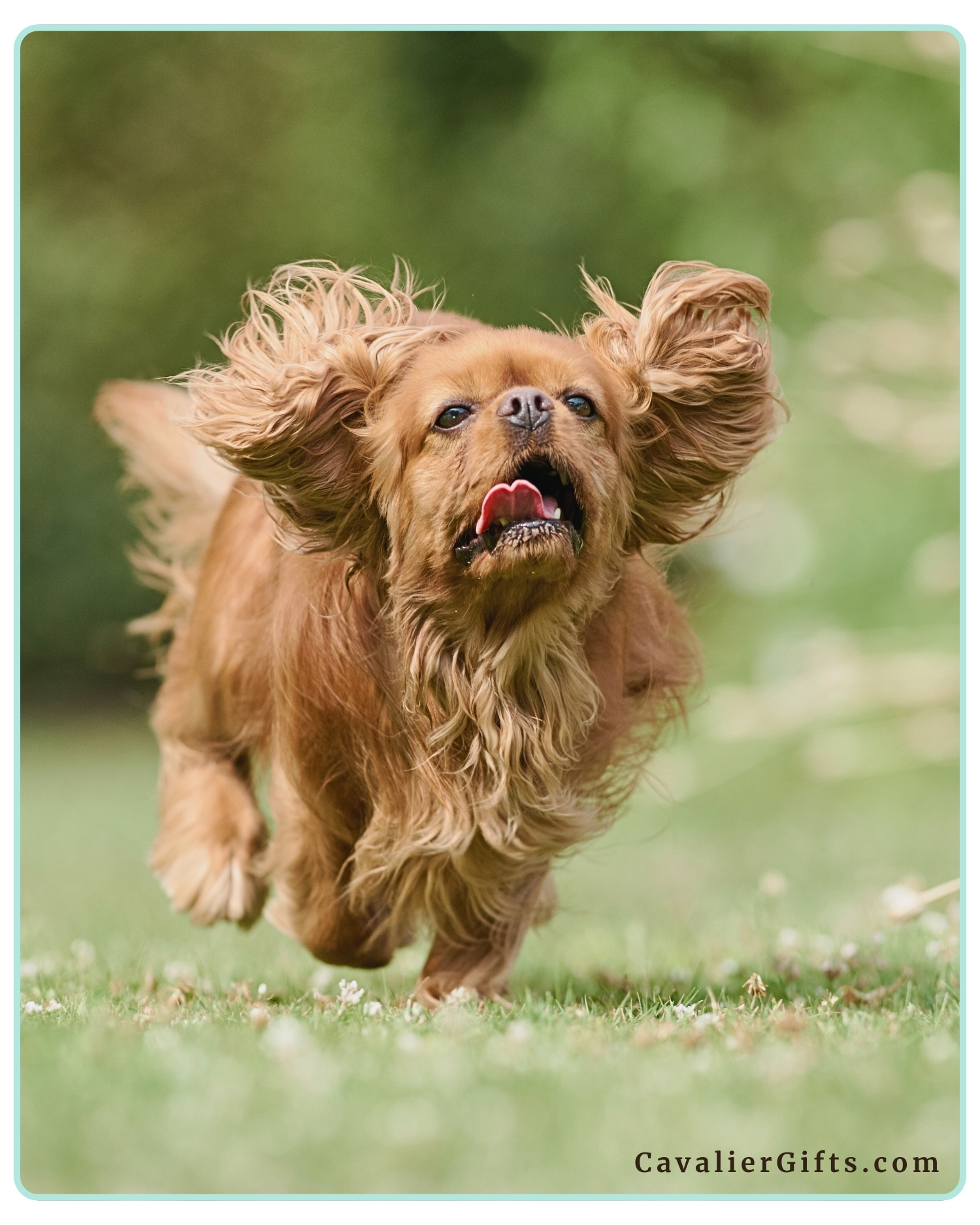

Brain and Cognitive Function
DHA is a crucial component of brain cell membranes and plays a significant role in cognitive function. In Cavalier puppies, it supports brain development and learning. In senior Cavaliers, it helps prevent cognitive decline and supports memory and problem-solving skills. Studies have shown that dogs supplemented with DHA perform better on cognitive tests than those that do not receive adequate amounts.
Heart Health
Omega-3 fatty acids are essential for supporting cardiovascular function by helping regulate heart rhythm, reduce blood pressure, and improve circulation. For Cavaliers, who are especially prone to mitral valve disease (MVD), a common heart condition in the breed, omega-3s are even more important. Given their susceptibility to MVD, ensuring your Cavalier’s diet is rich in omega-3s can play a crucial role in supporting their heart health and may help slow the progression of the disease.
Immune System Support and Inflammation Control
Chronic inflammation is a factor in many health issues, including autoimmune conditions, allergies, and even cancer. For Cavaliers, who are prone to conditions like Chiari malformation, managing inflammation is especially critical. Omega 3s play an important role in regulating the body’s inflammatory response, helping to balance the immune system and reduce excessive inflammation. By incorporating omega 3s into your Cavalier’s diet, you can help protect against the inflammation that worsens conditions like Chiari malformation and support overall immune health.
Best Omega-3 Sources for Cavaliers
The best omega-3 sources for dogs are those that provide EPA (eicosapentaenoic acid) and DHA (docosahexaenoic acid) in their most bioavailable forms. These two types of omega-3s are the most beneficial for dogs, as they are directly used by the body to support a variety of vital functions, from heart health to joint mobility. The most bioavailable forms of these omega-3s are typically found in marine-based sources, such as oily fish. Fish like salmon, sardines, mackerel, and anchovies are excellent options because they contain high levels of both EPA and DHA, making them ideal for supporting your Cavalier’s health. These fish provide omega-3s in a form that’s easy for the body to absorb, ensuring that your dog gets the maximum benefits.
In addition to fish, fish oil supplements can also be a great source of omega-3s. However, it’s important to choose high-quality, purified fish oils that are free of contaminants like mercury. If your Cavalier is sensitive to fish or you prefer plant-based sources, algae oil is another excellent option, as it provides DHA without the fishy aftertaste or concerns about ocean contaminants. While flaxseed and chia seeds offer plant-based omega-3s, they contain ALA (alpha-linolenic acid), which the body must convert into EPA and DHA, an inefficient process for dogs. This means that marine-based omega-3s are typically the best option for achieving optimal health benefits. By rotating between these high-quality sources, you can help ensure your Cavalier is getting the most effective omega-3s for their needs.
Watch our fresh fish DIY and don’t forget to subscribe to @CavalierTipsandFun for more!
Fresh Fish (Whole Food Source of EPA and DHA)
Feeding fresh, oily fish is one of the most natural ways to provide omega-3s. However, choosing the right type of fish is essential due to concerns about mercury levels, sustainability, and proper sourcing.
Some of the best options for Cavaliers include:
- Sardines: Small, low-mercury fish that are naturally high in omega-3s. They are one of the safest whole-food sources.
- Anchovies: Similar to sardines, anchovies are rich in DHA and EPA while having minimal contamination risks.
- Herring: Often used in high-quality pet foods, herring is another small, oily fish packed with omega-3s.
- Atlantic Mackerel: This species is safe, but avoid king mackerel, which is high in mercury.
- Wild-Caught Salmon: A great source of omega-3s, but farmed salmon may contain higher levels of contaminants.
When feeding fresh fish, it’s important to either lightly cook the fish or feed it raw if it’s safely sourced. Cooking fish too much can break down some of the omega-3s, while raw fish (from a trusted, safe source) can provide the most nutrients. However, if you choose to feed raw fish, it should be frozen for a week first to reduce the risk of parasites, which can be a concern with certain types of fish.
It’s essential to avoid fish that have been prepared with added salt, spices, or sauces. These seasonings can be harmful to dogs. Also, always avoid feeding cooked bones, as they can splinter and cause serious internal injuries.
Fish Oil Supplements
Many pet parents turn to fish oil supplements to provide omega-3s, but not all fish oil supplements are the same. Choosing the right one for your Cavalier is important to ensure you’re giving them the best quality and the most effective nutrients.


How to Choose a High-Quality Fish Oil
When selecting a fish oil supplement, look for species-specific labeling. Instead of settling for generic “fish oil,” opt for oils like sardine oil, anchovy oil, or krill oil. This ensures transparency in sourcing and gives you a better idea of where the oil is coming from.
When choosing a fish oil supplement, it’s important to look at the levels of EPA and DHA, the two types of omega-3 fatty acids that provide the most health benefits for your dog. The label on the bottle should specify the amount of EPA and DHA in each serving, not just the total amount of fish oil.
For example, a bottle might say it contains 1,000 mg of fish oil per serving. But if the label doesn’t show how much of that is EPA and DHA, it’s hard to know how much of the oil is actually providing the beneficial omega-3s your dog needs.
Some fish oils may have more EPA, which is great for joint and heart health, while others may have more DHA, which supports brain function and reduces inflammation. Knowing exactly how much of each omega-3 is in the oil allows you to be more confident that you’re giving your Cavalier the right amount for their specific health needs. This way, you can make sure you’re getting the full benefits of the omega-3s in the supplement.
Also, choose products that are third-party tested. Reputable brands will test their oils for harmful contaminants like heavy metals, PCBs, and oxidation levels. This helps ensure the oil is safe for your dog and that it hasn’t been compromised during production.
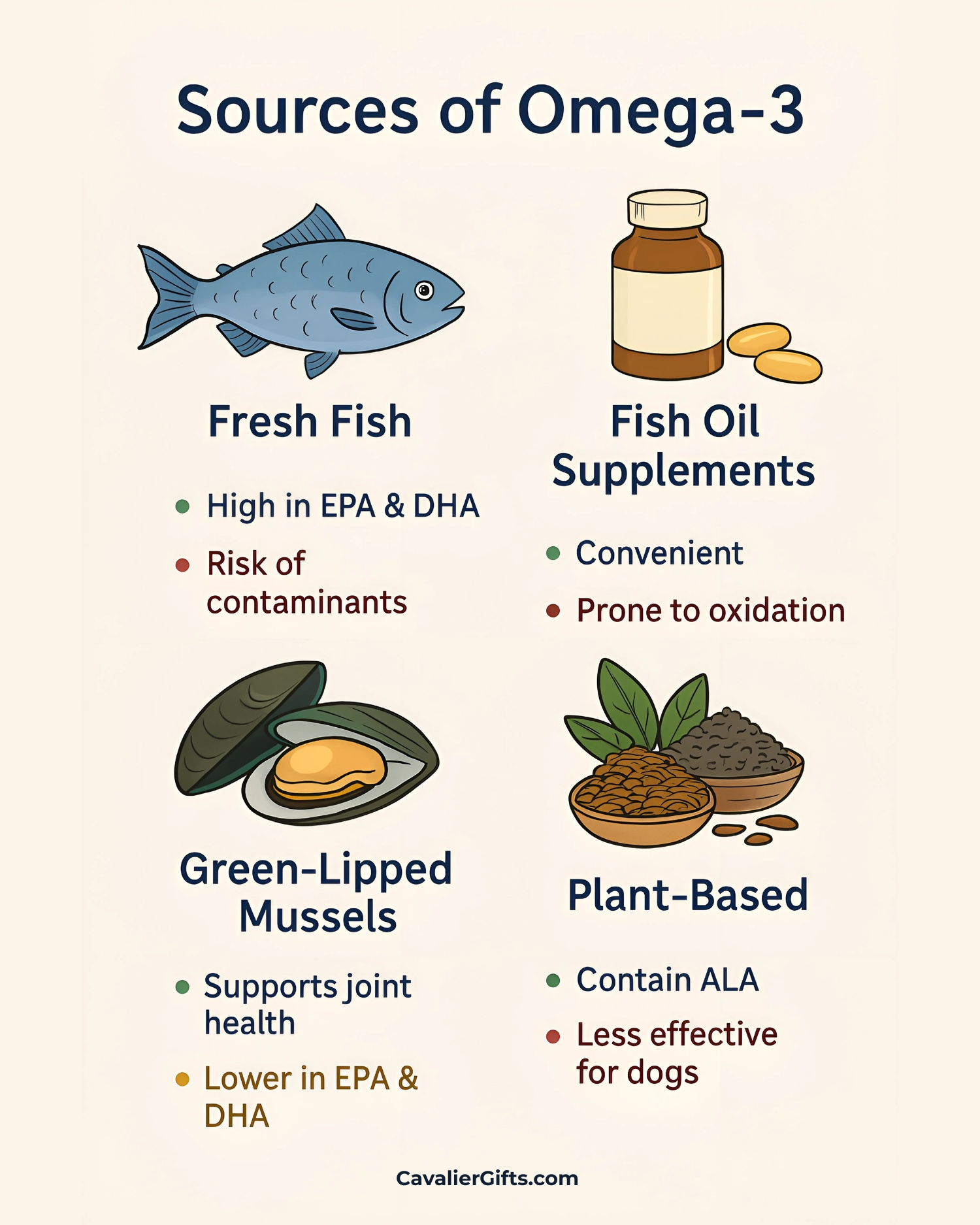

Liquid vs. Capsules
Fish oil comes in two common forms: liquid and capsules. Liquid fish oil (often found in pump bottles) is convenient because it’s easy to dose, but it’s more prone to oxidation once opened. Oxidation occurs when the oil is exposed to light, heat, or air, so it must be stored in the refrigerator and used quickly to maintain its freshness.
On the other hand, capsules are more stable since the oil is protected from air exposure, which reduces the risk of oxidation. However, they can be harder to dose accurately, especially for small dogs.
Oxidation Risks
One of the biggest concerns with fish oil is oxidation. Omega-3s are very sensitive to light, heat, and oxygen, and when the oil oxidizes, it can lose its effectiveness and even become harmful. Signs of rancid fish oil include a strong fishy smell or an unusual taste.
To minimize the risk of oxidation, here are a few tips:
- Choose dark glass bottles instead of clear plastic, as glass helps protect the oil from light exposure.
- Store the fish oil in the refrigerator after opening to keep it fresh.
- Use the oil within 30 to 60 days of opening to ensure you’re getting the best quality.
By taking these steps to choose a high-quality fish oil and storing it properly, you can help ensure your Cavalier gets the full benefits of omega-3s for their heart, joints, and overall health.
Green-Lipped Mussels: A Powerhouse for Joint Support
Green-lipped mussels (Perna canaliculus), native to New Zealand, are one of the most beneficial natural sources of omega-3s for dogs. Unlike traditional fish-based omega-3 supplements that provide primarily EPA and DHA, green-lipped mussels contain a unique omega-3 fatty acid called ETA (Eicosatetraenoic Acid). ETA has been found to have additional anti-inflammatory properties, making it especially helpful for dogs suffering from joint issues like arthritis.
The anti-inflammatory effects of ETA, along with the presence of glucosamine and chondroitin, make green-lipped mussels an excellent option for promoting joint health. These compounds work together to support cartilage repair, reduce inflammation, and enhance mobility in dogs experiencing joint stiffness or discomfort. This combination is particularly beneficial for dog breeds, like Cavaliers, that are prone to developing joint issues as they age.
Comparing Omega-3 Content in Green-Lipped Mussels vs. Fish
In terms of EPA and DHA content, green-lipped mussels may not provide as high a concentration per serving as fatty fish, but their ETA provides an extra layer of anti-inflammatory benefits. This makes green-lipped mussels an excellent addition to a dog’s diet, particularly for those with joint concerns.
How to Feed Green-Lipped Mussels to Your Dog
Green-lipped mussels are often available as freeze-dried powder or in chewable treat forms. Both forms make it easy to incorporate them into your dog’s daily routine, but the powder can be sprinkled over food or mixed into homemade dog meals for ease of use.
As with any supplement, it’s important to start with a small amount to monitor how your dog responds, especially if they are new to green-lipped mussels or have a sensitive digestive system. For the dosing of green-lipped mussels, it’s always best to refer to the product-specific guidelines since the concentration can vary depending on the form (freeze-dried powder, chewables, etc.) and brand. However, a general recommendation often seen in supplements for dogs is:
- Start with 1/4 teaspoon per 10 pounds of body weight per day for powder form. This can be adjusted based on the dog’s response and their specific needs.


Plant-Based Omega-3s: Less Effective for Dogs, but Still Valuable
When it comes to omega-3 fatty acids, plant-based options are less efficient for dogs compared to animal sources like fish, as they primarily contain ALA (alpha-linolenic acid). While ALA is an essential omega-3 fatty acid for humans, dogs face challenges in converting ALA to the more bioavailable forms, EPA (eicosapentaenoic acid) and DHA (docosahexaenoic acid), which are the forms most beneficial for their health. This makes plant-based omega-3s less effective for dogs in supporting the same health benefits as those derived from marine sources.
Why ALA Is Less Effective for Dogs
Dogs have a relatively inefficient ability to convert ALA into EPA and DHA. The process of conversion requires specific enzymes, which dogs do not produce in large enough quantities to convert sufficient ALA into the needed forms of omega-3s. As a result, while plant-based omega-3s can still offer some benefits, they are not as effective at delivering the omega-3s that support joint health, cognitive function, and heart health in the same way that fish-derived omega-3s do.
Nevertheless, plant-based sources of omega-3s are still valuable as part of a balanced diet. They can provide supplemental omega-3s and contribute to overall health but should not be relied on as the primary omega-3 source for dogs.
Common Plant-Based Omega-3 Sources
- Flaxseeds: Flaxseeds are one of the most popular plant-based sources of ALA omega-3s. They can be ground and added to your dog’s food. However, the conversion rate of ALA to EPA and DHA is low in dogs, so while flaxseeds may offer some benefits, they should not be relied on exclusively for omega-3 needs.
- Chia Seeds: Like flaxseeds, chia seeds are rich in ALA. These tiny seeds are highly nutritious and can be added to a dog’s meals. They can absorb water and form a gel, which can be helpful for digestive health. While chia seeds may offer some benefit, they should be seen as supplementary, not primary, sources of omega-3s for dogs.
- Hemp Seeds: Hemp seeds contain ALA as well, along with a well-balanced ratio of omega-3 and omega-6 fatty acids. While these can contribute to overall fatty acid intake in dogs, their conversion to EPA and DHA is also limited. Hemp oil, a more concentrated form, may be more effective but still not as efficient as fish oil or algae oil in providing the omega-3s dogs need for optimal health.
Algae Oil: The Better Plant-Based Alternative
While plant-based sources like flaxseeds and chia seeds are valuable in certain aspects, algae oil is usually a better plant-based option for dogs. Algae oil is derived from marine algae, which naturally produce DHA (and sometimes EPA) without requiring the conversion process. Unlike other plant-based sources that contain ALA, algae oil provides a direct source of DHA, the omega-3 that plays a critical role in brain function, heart health, and reducing inflammation.
Algae oil is especially beneficial for pet parents who prefer to avoid fish-based products for ethical, environmental, or allergy reasons. It provides the same essential omega-3 fatty acids found in fish oil, but without the potential risks associated with mercury contamination or fish-based allergens. This makes algae oil a great plant-based alternative for ensuring your dog receives the health benefits of omega-3s.
Algae oil supplements are available in capsules or liquid form and can be incorporated into your dog’s diet just like fish oil. The recommended dosage varies by brand, so it’s important to follow the manufacturer’s guidelines and consult your vet to ensure the right amount for your dog.
While algae oil is a great alternative to fish oil, there are a few differences to consider. One of the main differences is that fish oil generally contains more EPA, an omega-3 that is particularly helpful for reducing inflammation and supporting joint health, while algal oil tends to have more DHA, which is important for brain and eye health. Because of this, if your dog needs more EPA for inflammation or joint issues, fish oil might be a better choice. Additionally, algae oil can be more expensive than fish oil, and it may not be as widely available in stores. Another thing to note is that fish oil is often more bioavailable, meaning it’s easier for dogs to absorb and benefit from. That said, algae oil is still a very good option, especially if you’re looking for a more sustainable, vegetarian, or fish-free supplement. It’s always a good idea to talk to your vet about which type of omega-3 is best for your dog’s specific health needs.
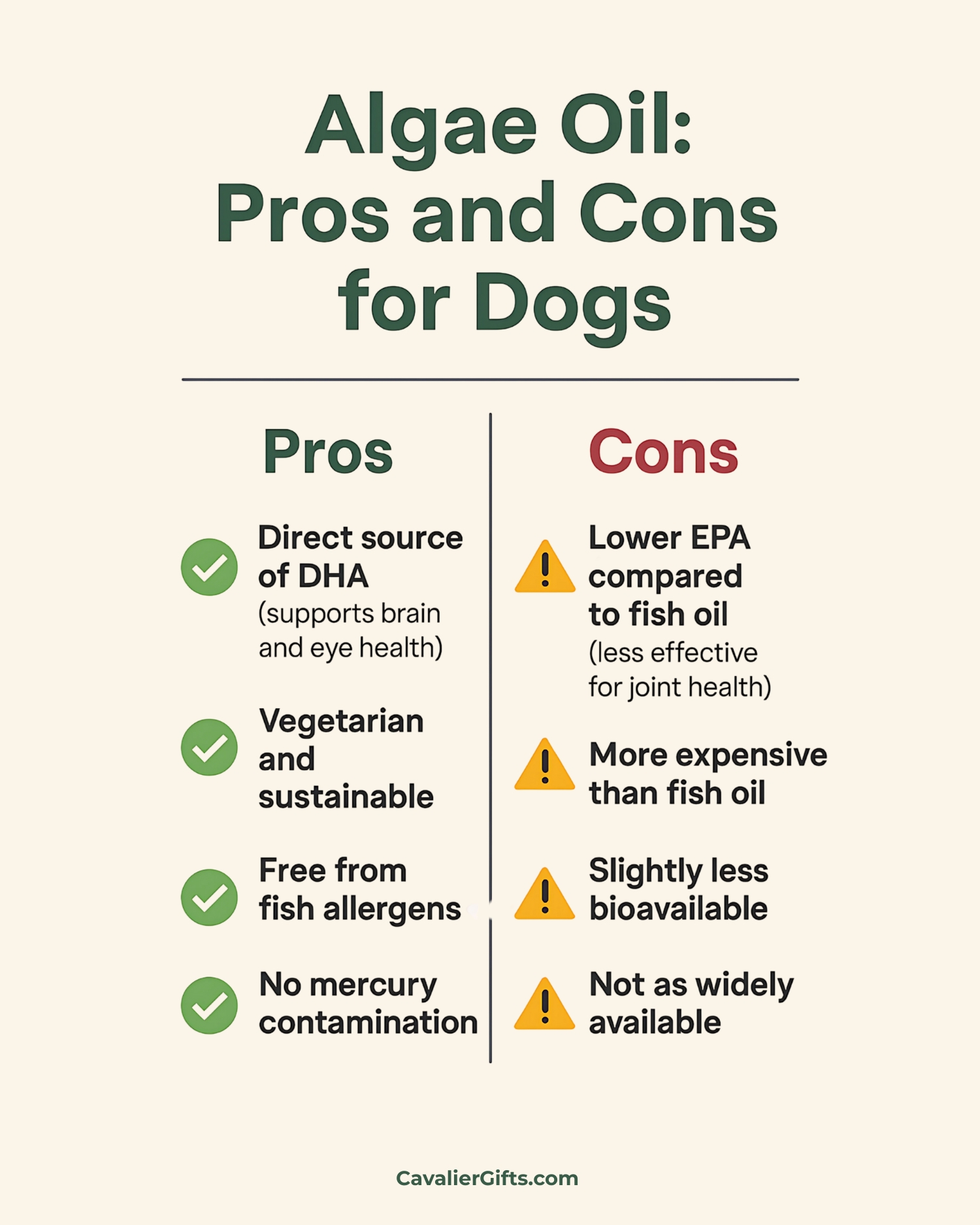

How Much Omega-3 Does Your Cavalier Need?
For general health, the recommended omega-3 dosage, specifically EPA and DHA, is typically between 20 to 55 mg per pound of body weight per day. If your Cavalier has specific health issues, like arthritis or inflammation, the dosage may increase to 50 to 100 mg per pound. If your dog is lacking omega-3s, you might notice signs like dry skin, excessive shedding, joint stiffness, or a dull coat. To ensure you’re giving the right amount, it’s important to consult your vet, who can recommend the proper dosage based on your dog’s size and health concerns.
Final Thoughts
Omega 3s are essential for your Cavalier’s overall health, supporting heart, brain, joint and skin function. By incorporating a variety of high quality omega 3 sources such as fish, green lipped mussels and supplements, you can ensure your Cavalier King Charles Spaniel receives a well rounded intake of these beneficial fatty acids.
Quality matters, so focus on bioavailable forms of EPA and DHA, and always rotate the sources you use to prevent imbalances. Whether you opt for fresh fish, fish oil or green lipped mussels, it’s crucial to store and handle these sources properly to avoid oxidation.
Before making any changes, check with your veterinarian to tailor an omega 3 plan that best suits your Cavalier’s individual health needs. Consistently including omega 3s in their diet will support long term health and vitality, helping your dog thrive at every stage of life.
Do you feed your Cavalier fresh fish?
|
|
        
|
        
|
Google Ad Below
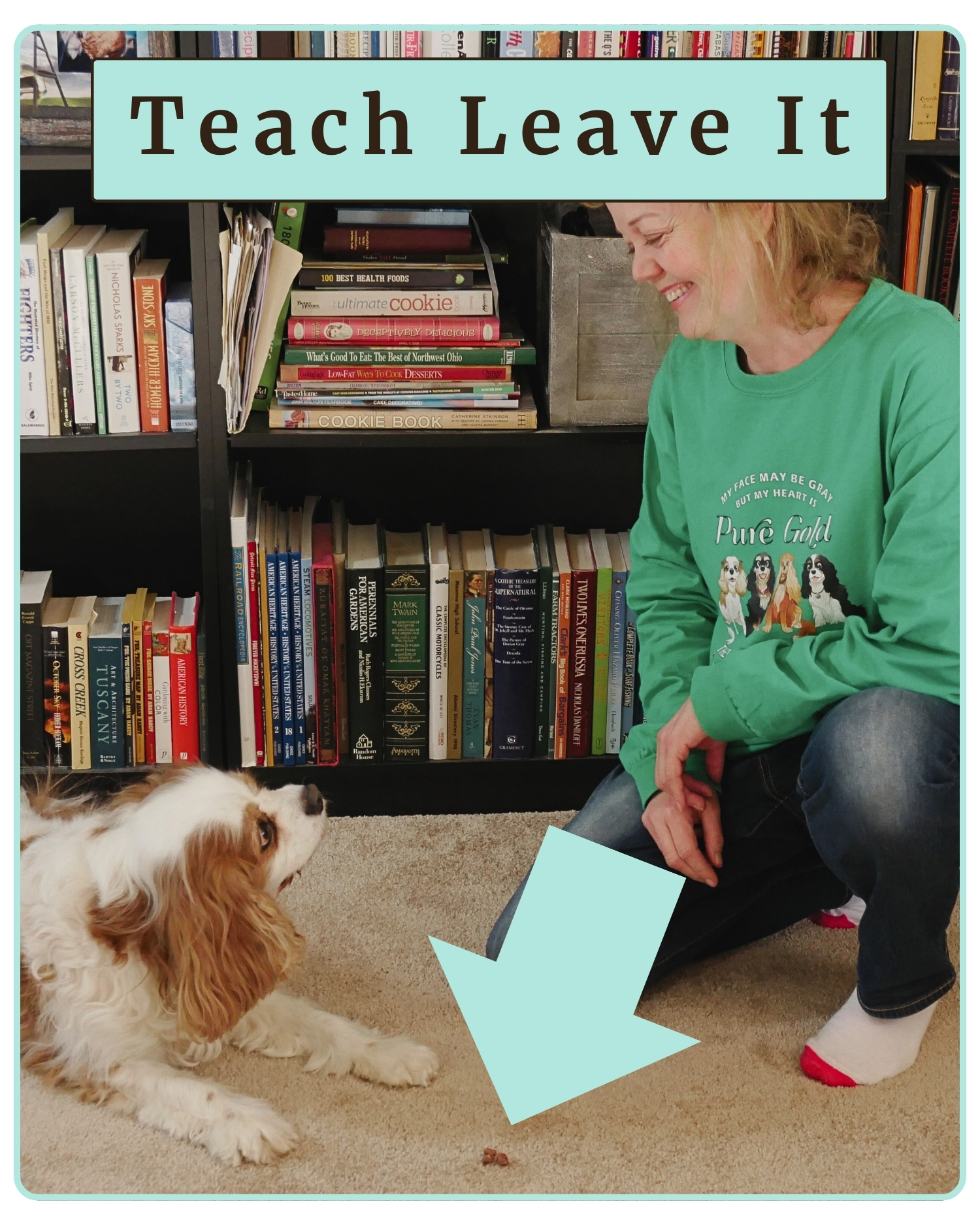

How to Teach Your Cavalier King Charles Spaniel to “Leave It” | Positive Training for Cavaliers (Early access for our Patreon community)
How to Teach Your Cavalier King Charles Spaniel to “Leave It” | Positive Training for Cavaliers











Teaching your Cavalier King Charles Spaniel to “leave it” or ignore something on your cue can be lifesaving. Imagine dropping a pill in front of your Cavalier or going for a walk and passing garbage in the street. If your Cavalier King Charles Spaniel has a reliable “leave it” cue, you can easily ask him to leave it as you pick up the pill or walk past the garbage.
When I start the “leave it” training, what I want my dog to learn is that “leave it” doesn’t mean he doesn’t get something, but that I have something better. This helps to build a more reliable behavior, especially off-leash. If you only teach your dog that “leave it” means he doesn’t get something, he might just try to grab the item faster or run off with it. That’s not what we want!
As with all dog training, remember that you need to regularly practice these lessons. Training your Cavalier is not just about doing it once and then only when you need it. Reliable dog training takes time, patience, and consistency. Cavalier King Charles Spaniels, in particular, can be a bit food-driven, so keeping them engaged and excited about the reward is key.
So, be patient, consistent, and most importantly, have fun with your Cavalier while training!


Teaching Your Cavalier to Leave It Level 1
Start with a small, low-value dog treat in your closed hand, and place it about 12 inches to the side of your Cavalier’s face. Make sure your hand is at the right height, not too close to his face, but not too far away either. Let your dog see it there, and wait him out. As soon as he moves his face away or ignores the treat, say, “YES!” and reward him with an amazing treat from your other hand. Not going for the treat is a win, too! So, if you present the leave it treat hand and he doesn’t go for it, “YES!” and treat. Repeat this a few times.
When your Cavalier starts ignoring your treat hand altogether, move to Level 2.
Don’t forget to subscribe to our @CavalierTipsandFun for more!
Teaching a Dog to Leave It Level 2
Start like Level 1, but before you drop your hand, say your “leave it” cue once. Wait him out; as soon as he moves his face away or ignores the treat, say, “YES!” and treat from your other hand. Repeat. When he stops going for your hand after hearing the “leave it” cue, move to Level 3.
Training Your Cavalier to Leave It Level 3
Say your “leave it” cue and drop your hand with the low-value treat to your dog’s side, but leave your hand OPEN. If he goes for the treat, quickly close your hand. When he moves his face away, praise and reward him with a treat from your other hand. Repeat. When your Cavalier is reliably ignoring the treat in your open hand, move to Level 4.
Teaching Your Cavalier to Ignore Items Level 4
At this stage, it’s time to change things up a bit. Up until now, you’ve been using low-value, boring dog treats for the “leave it” item. Once your dog is starting to get the hang of it, it’s time to up the ante. Use tastier treats or toys as the “leave it” item, but remember, his reward needs to be even better.
You can try:
- Tastier treats or food
- Paper products, tissue, or paper towels
- Toys
Subscribe to @RaisingYourPetsNaturally for more!
Here’s how to set it up when using a toy:
- Pick a Toy: Choose a toy that your Cavalier likes but isn’t so high-value that your Cavalier would immediately grab it without hesitation. Start with something mildly exciting like a squeaky ball, fleece tuggy toy, or stuffed animal that your dog enjoys.
- Set Up the Training Area: Find a quiet spot where you can focus and your dog isn’t too distracted by other things. Make sure it’s a place where you can manage your dog’s movement and reactions.
- Start the Cue: Hold the toy in your hand and get your dog’s attention. Don’t get too silly. You just want him to know it’s there, with a bit of excitement.
- Use the “Leave It” Cue: Once you’ve gotten his attention, say the “leave it” cue calmly. Hold the toy in front of your dog just out of reach, but don’t place it on the ground yet.
- Wait for the Response: Your dog may try to lunge for the toy or show interest in it. The goal here is for him to move away or ignore it, not to grab it. If he goes for it, just swipe the toy up to your chest and ignore him and wait for him to ignore it. Then repeat the process of lowering your hand with the toy. As soon as your dog turns his head or steps away from the toy, immediately say “YES!” and give him a better reward (a tastier treat or something that’s even more valuable than the toy).
- Repeat and Increase Difficulty: Repeat the exercise several times, and gradually increase the difficulty. Once your Cavalier reliably ignores the toy when it’s held in your hand, move on to placing the toy on the ground. To set this up, place the toy behind you, out of reach. This way, you can gently body block your dog if he tries to move toward it. When he turns away or ignores the toy, immediately reward him with a better treat or better toy.
- Body Blocking: Body blocking involves using your own body to gently guide your dog away from a distraction, like a toy, by positioning yourself between your dog and the item. It’s important to note that body blocking is not about kneeing or being rough with your Cavalier. It’s a gentle, calm way to redirect their attention. However, some dogs may find body blocking intimidating or scary, so if your Cavalier shows signs of stress, it’s best to avoid this method and use alternative techniques for redirection.
- Build Duration: As your Cavalier gets more comfortable with the “leave it” cue around toys, try holding the cue for a longer period of time. For example, you can wait for him to sit or stay before rewarding him. This increases his patience and focus during the exercise.
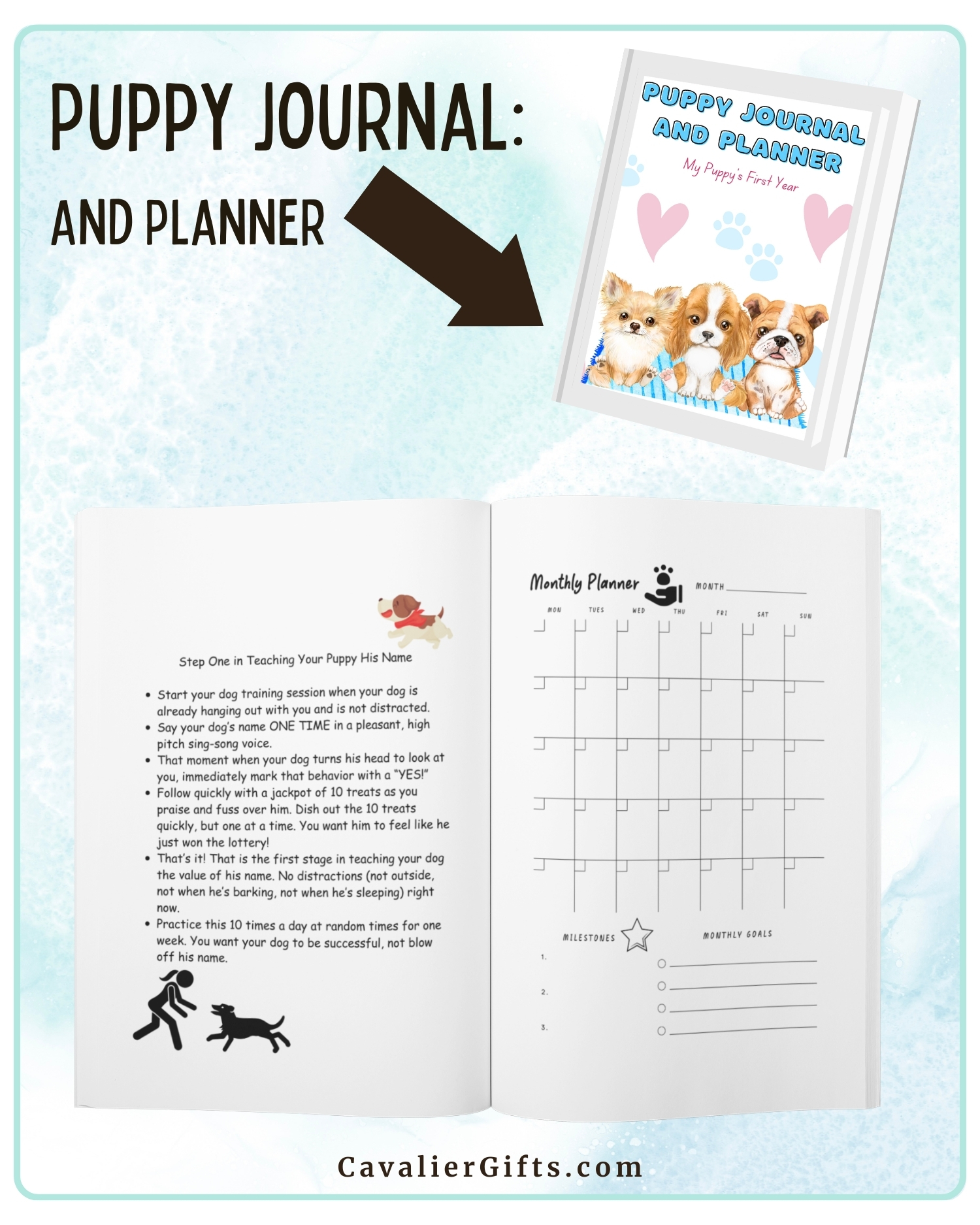

Training Your Cavalier to Leave Something Level 5
Place a low-value treat under your cupped hand, with your dog in front of you. Say your “leave it” cue, and wait for your Cavalier to ignore the treat. If he looks away or shows interest but doesn’t try to grab it, immediately reward him from your other hand with a better treat.
As he gets the hang of this, start showing the “leave it” treat under your cupped hand. If your dog ignores the treat, reward him from your other hand. If he tries to go for the treat, simply cup your hand over the treat again. Repeat this process, gradually raising the criteria by making the treat more tempting and testing his ability to resist.
Teaching Your Cavalier to Leave It Level 6 and Beyond
Now it’s time to make things more challenging. Increase the difficulty by adding distractions, different environments, or a variety of leave-it items. Always be mindful of your Cavalier’s current ability level, and don’t rush the process. If you find your Cavalier is struggling or making mistakes, step back and simplify the task again. You want to build confidence and reliability.
Reminders:
- Never allow your Cavalier to get the “leave it” item. If you want your Cavalier to have it, you pick it up and give it to him. The goal is to teach him that ignoring the item leads to something better, not just an empty reward.
- If your Cavalier is having trouble with the exercise, step back to easier levels or increase the value of the reward to keep him motivated and engaged. You can also try lowering the difficulty by using a less tempting “leave it” item to help him succeed.
- The goal isn’t just for your Cavalier to avoid the item once, but to understand that when you say “leave it,” he has the chance to earn something even better. The more your dog experiences this rewarding outcome, the more reliable the behavior will become.
Pro Tips:
- Keep training sessions short, positive, and fun! Don’t let the “leave it” item overwhelm or frustrate your Cavalier. If he’s struggling, simplify the task and increase the reward to keep him interested and motivated.
How Often Should You Practice the Leave It Behavior with Your Cavalier?
It is important to regularly practice “leave it” throughout the day, not just during formal training sessions. You can incorporate it during walks, around the house, or when playing. As you add distractions, make sure to reward your Cavalier for staying focused on you, especially when there are high value items around. Cavaliers are generally quick learners, but they can also get bored easily, so keep your training sessions positive and fun. Consistency and patience will pay off in the long run.
Pro Tip: Practice, practice, practice with various setups. You want your Cavalier to respond reliably to the “leave it” cue in real life situations, whether it is a dropped item, an enticing smell, or something on the floor. By practicing regularly, you ensure they will leave it without hesitation. I still reward those real life “leave its” to keep the behavior strong and consistent!
Conclusion
Practicing “leave it” regularly and in different situations helps ensure your Cavalier responds reliably when it matters most. Keep training sessions fun and rewarding, and don’t forget to reinforce real-life successes. Teaching a solid fetch and “drop it” will also complement “leave it,” giving your Cavalier even more useful skills. With consistency and patience, your Cavalier will continue to improve and make great choices in everyday life.
How is your leave it training going? I’d love to hear about it in the comments!
|
|
        
|
        
|
Google Ad Below
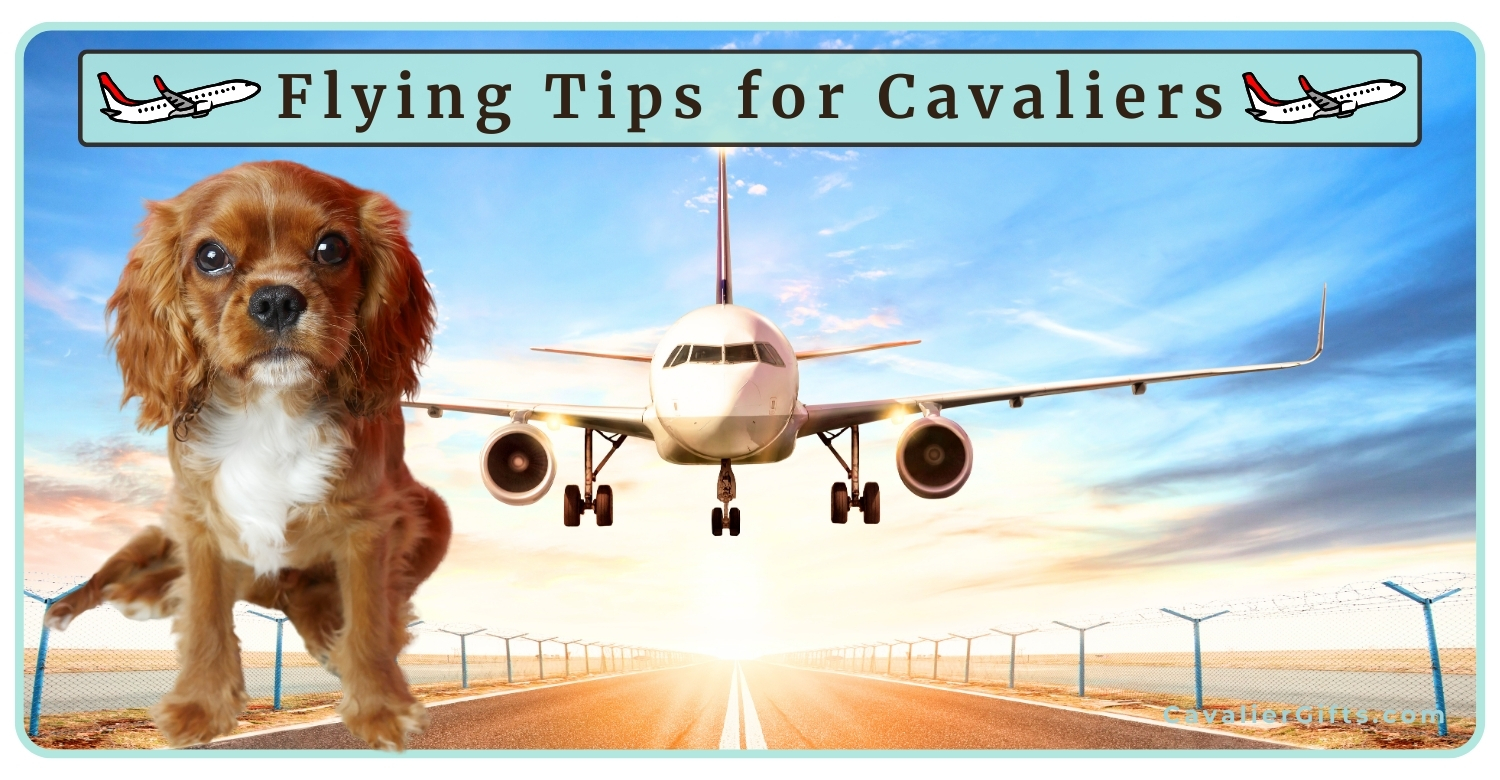

Preparing Your Cavalier King Charles Spaniel for Air Travel (Early access for our Patreon community)
Preparing Your Cavalier King Charles Spaniel for Air Travel











Through Dexter’s 15 years of life, we had countless adventures together, but every single one was by car. At nearly 30 pounds, flying in the cabin wasn’t an option for him, and I would never consider putting a dog in cargo. Now, with Stewart, I have the opportunity to travel by plane since he will be between 16 and 18 pounds as an adult, which is small enough to fit in an airline-approved travel crate under the seat.
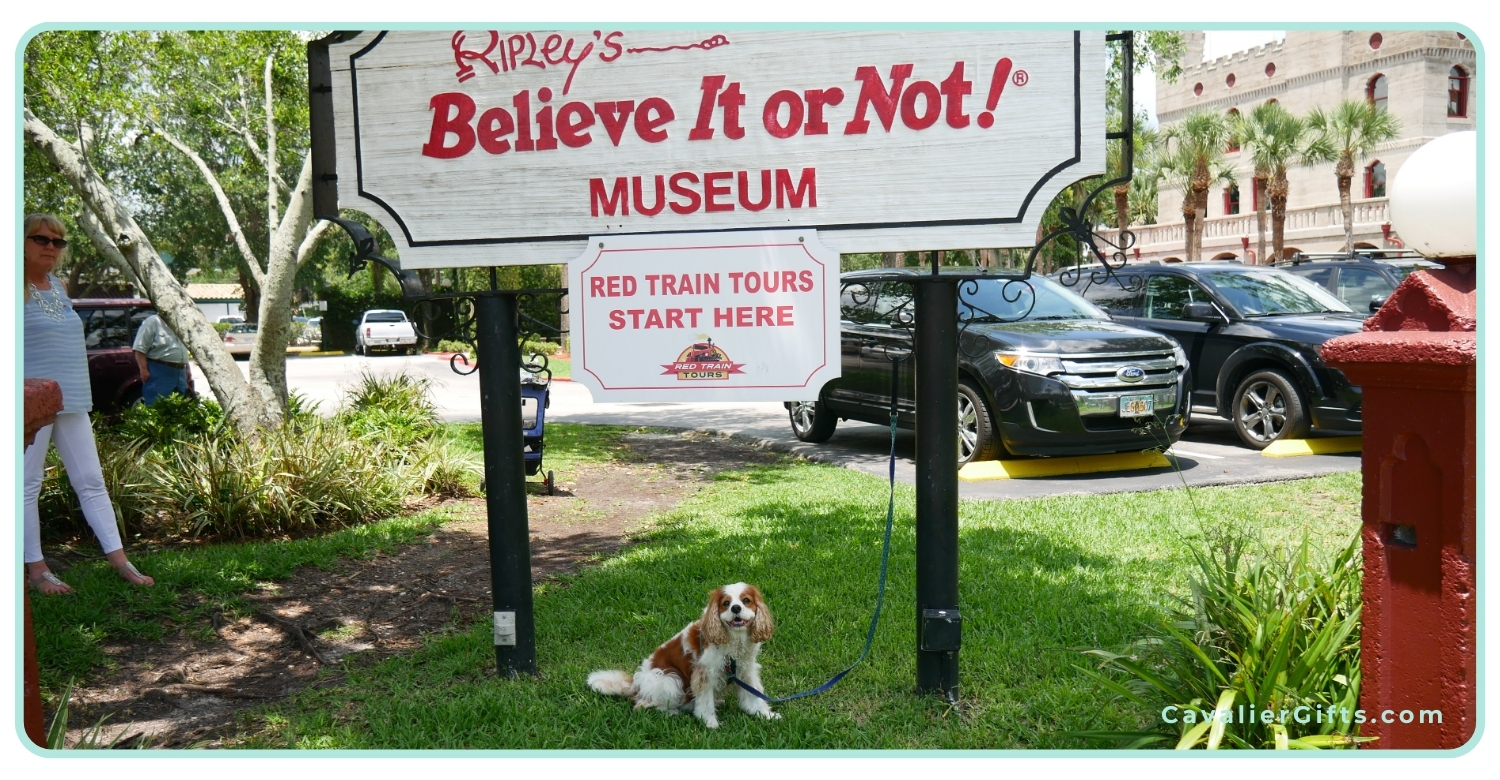

I have to admit, I’m a little nervous. It’s been almost 30 years since I last flew, and my experience wasn’t great. But I’m determined to make this a smooth process for both Stewart and myself. In September, we’ll be flying from Detroit to Portland, Maine, and I want to make sure Stewart is as comfortable and confident as possible for his first airplane trip.
Preparing Stewart, My Cavalier King Charles Spaniel for Air Travel
Since Stewart has never flown before, I’m taking a step-by-step approach to help him get used to every part of the travel experience. This isn’t just about the flight itself; it’s about everything leading up to it, from riding in his crate in the car to being in a busy airport environment.


Teaching a Cavalier to Enjoy a Travel Crate
One of the biggest adjustments for a Cavalier is spending time in a small, enclosed space. Since Stewart isn’t crate trained and has some separation anxiety, I’m taking extra care to make his travel crate a safe and positive space. An airline-approved travel crate is a much tighter fit, so here’s how I’ve been getting him used to it:
- Introducing the Crate Indoors – I started with short training sessions, luring Stewart into the travel crate with treats and rewarding him for stepping inside. Since it’s a tight fit, I guided him to turn around and reinforced him for doing so. Once he was comfortable moving inside, I worked on having him stay in the crate for a few seconds before rewarding and letting him out, gradually increasing the duration.
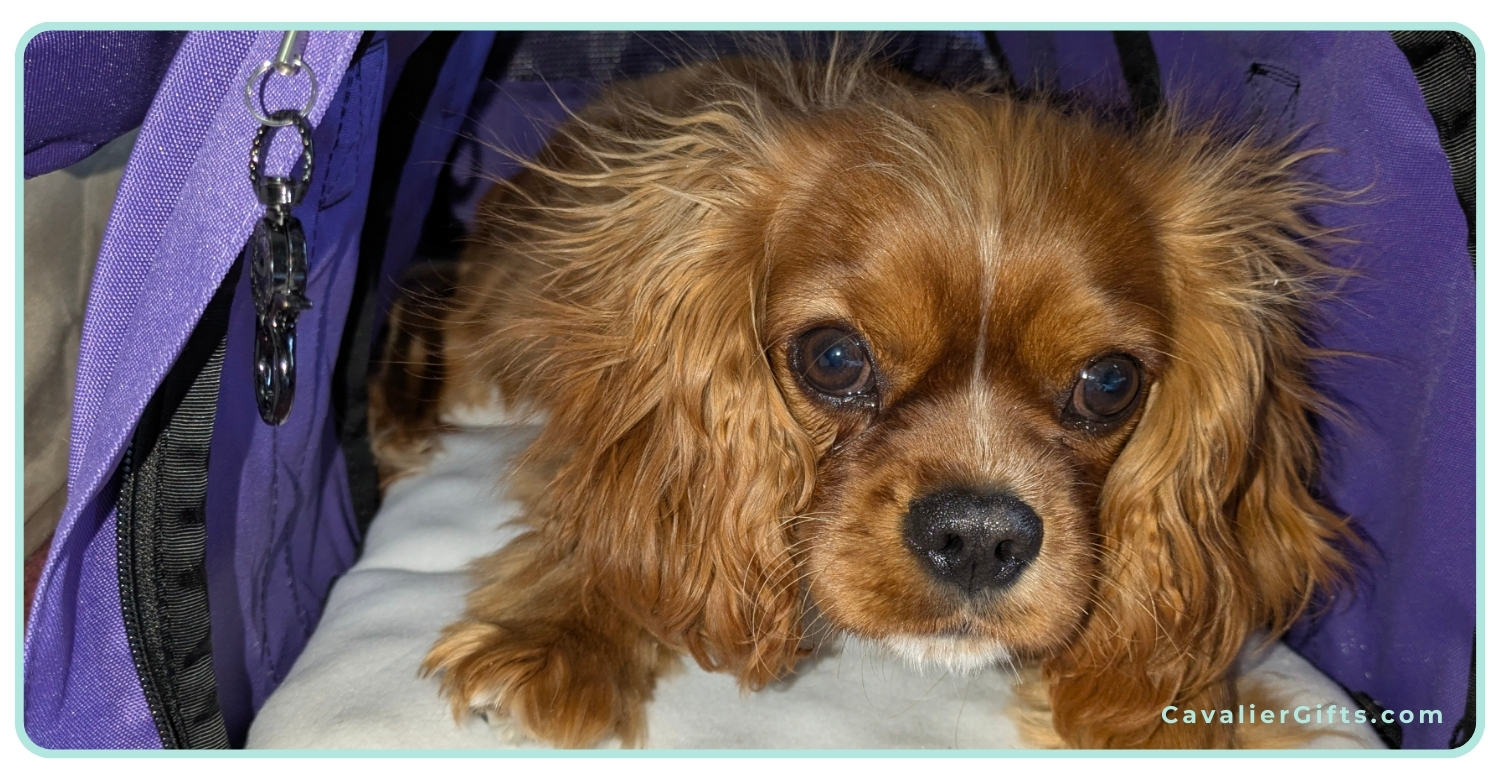

- Crate Inside a Crate – To help him transition smoothly to riding in the travel crate, I placed it inside his larger crate in the van. Since he was already used to the big crate, this made it feel more familiar. For the first couple of weeks, I left the travel crate unzipped, but zipped up the larger crate.

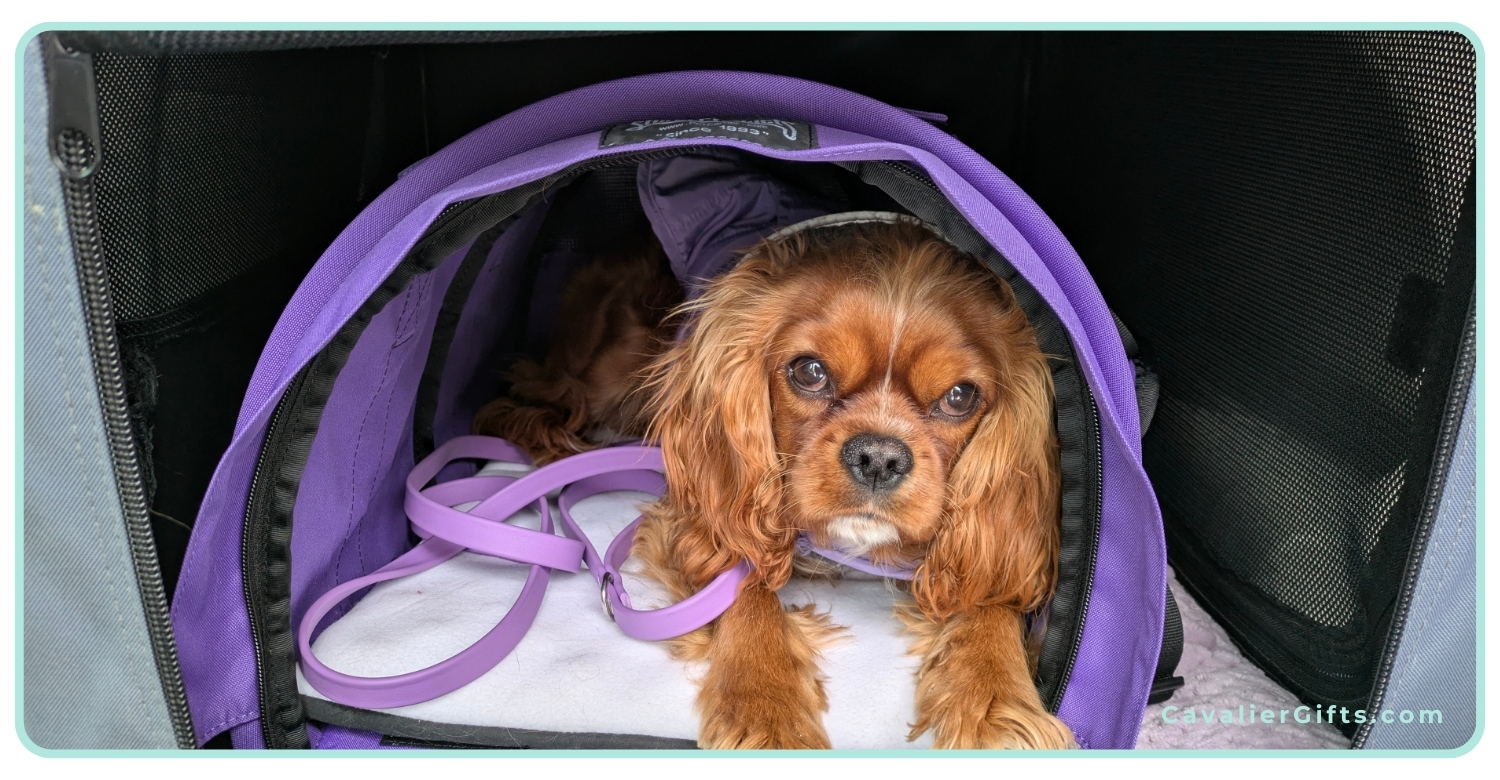
Stewart learning how to travel in his airplane approved carrier. - Zipping Up While Driving – Once he was comfortable, I started zipping up the travel crate while still inside the larger crate. This allowed him to experience confinement in a secure way without making a sudden change.

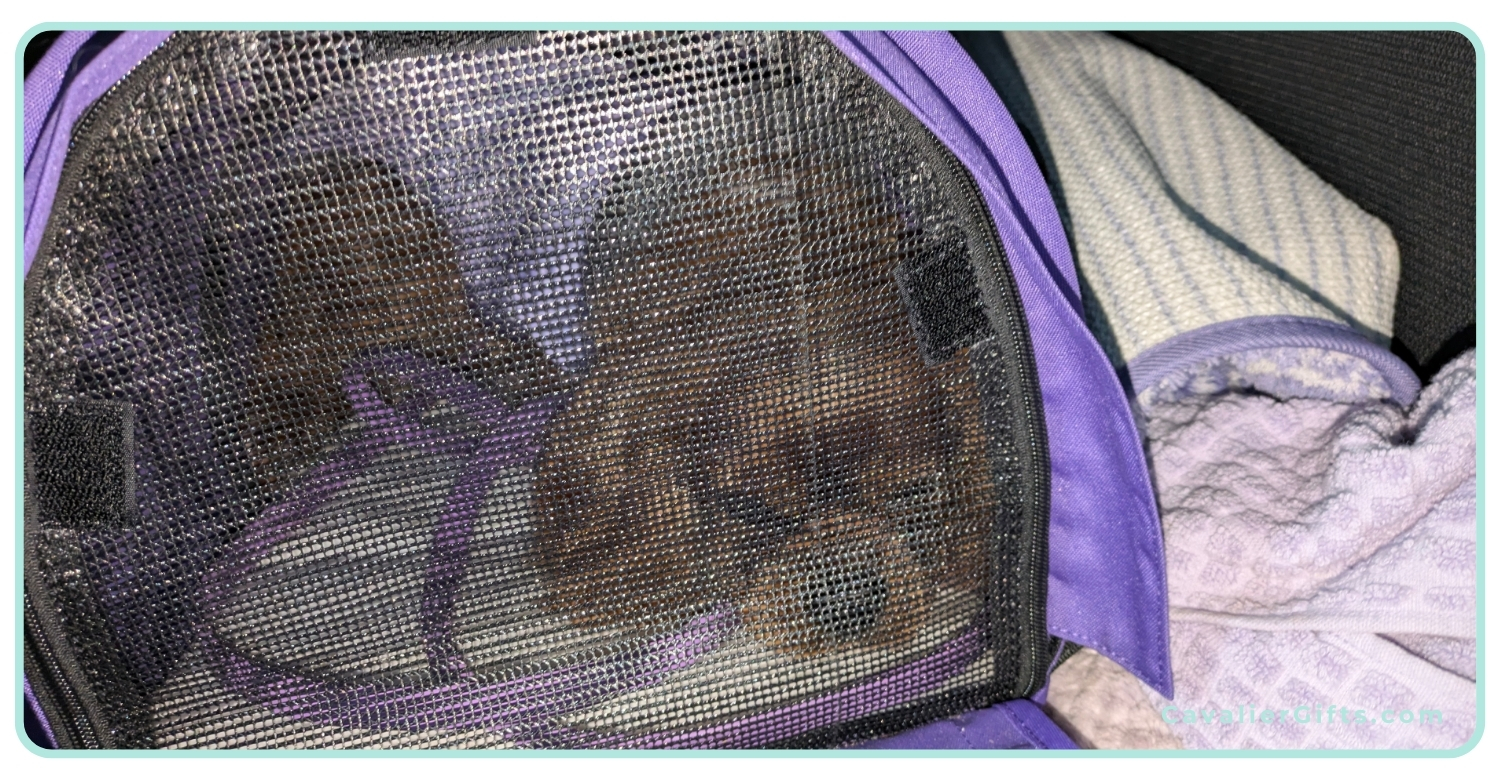
Stewart zipped up in his carrier. - Removing the Larger Crate – The next step will be taking the travel crate out of the big crate so that he’s riding in just the small one. By gradually adjusting him to this setup, he won’t even notice the change!
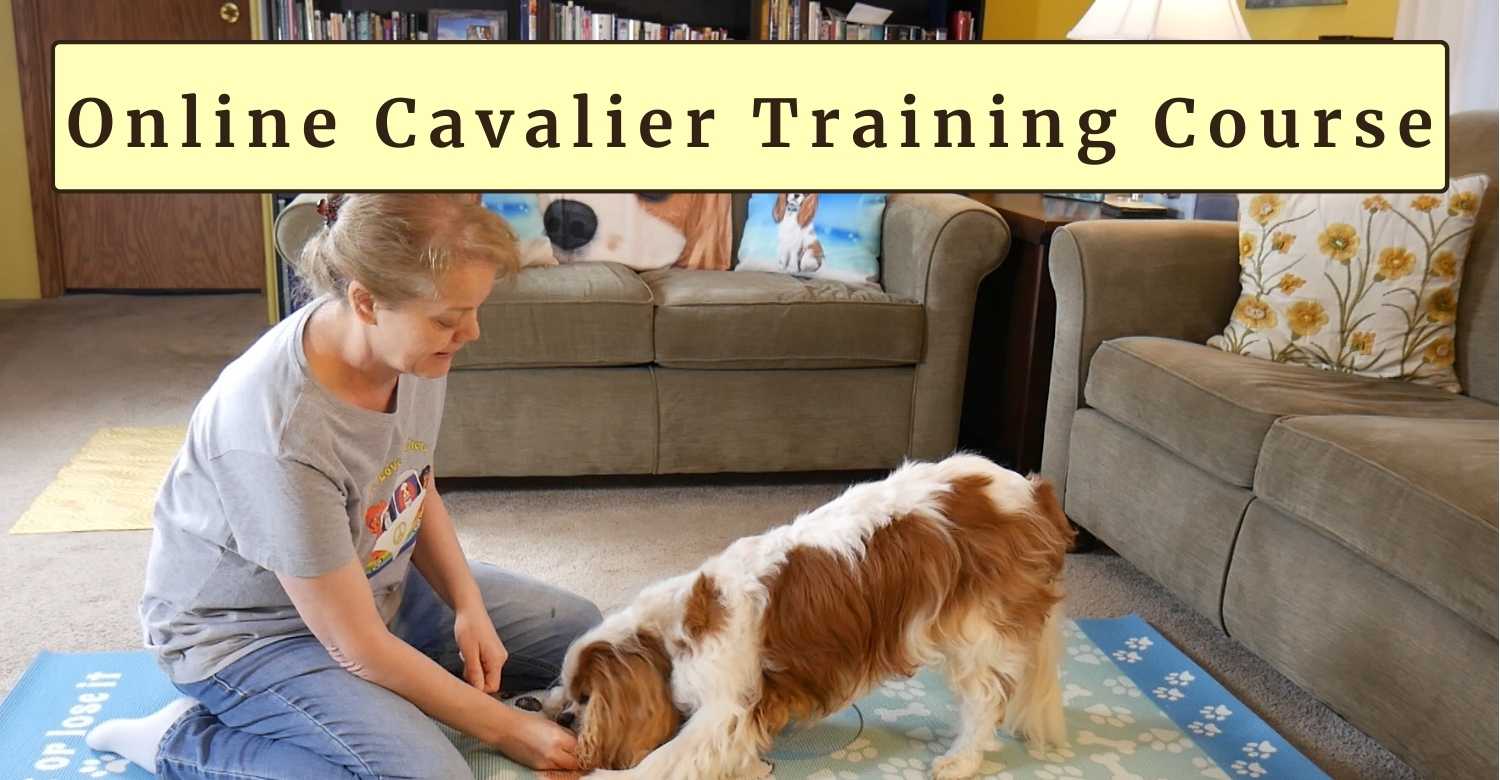

Socialization and Confidence Building
Beyond the crate, I want to make sure Stewart is confident in all the different environments he’ll encounter on our trip.
- Walking Politely on a Leash – Stewart will need to walk calmly on a leash through the airport. We’ve been practicing polite walking in various places with different surfaces and distractions. I will continue this training with busy locations as we progress through his training.
- Exposure to Crowds and Noises – Airports are full of noises; baggage carts, intercom announcements, rolling suitcases. I’m taking Stewart to different places where he can experience a variety of sounds and people in a controlled way.
- Getting Used to Security Procedures – At TSA checkpoints, I’ll need to take Stewart out of his crate and carry him through security. To prepare, I’ll work on calmly lifting him out of his crate and holding him in busier environments, helping him get comfortable with the experience before our trip.
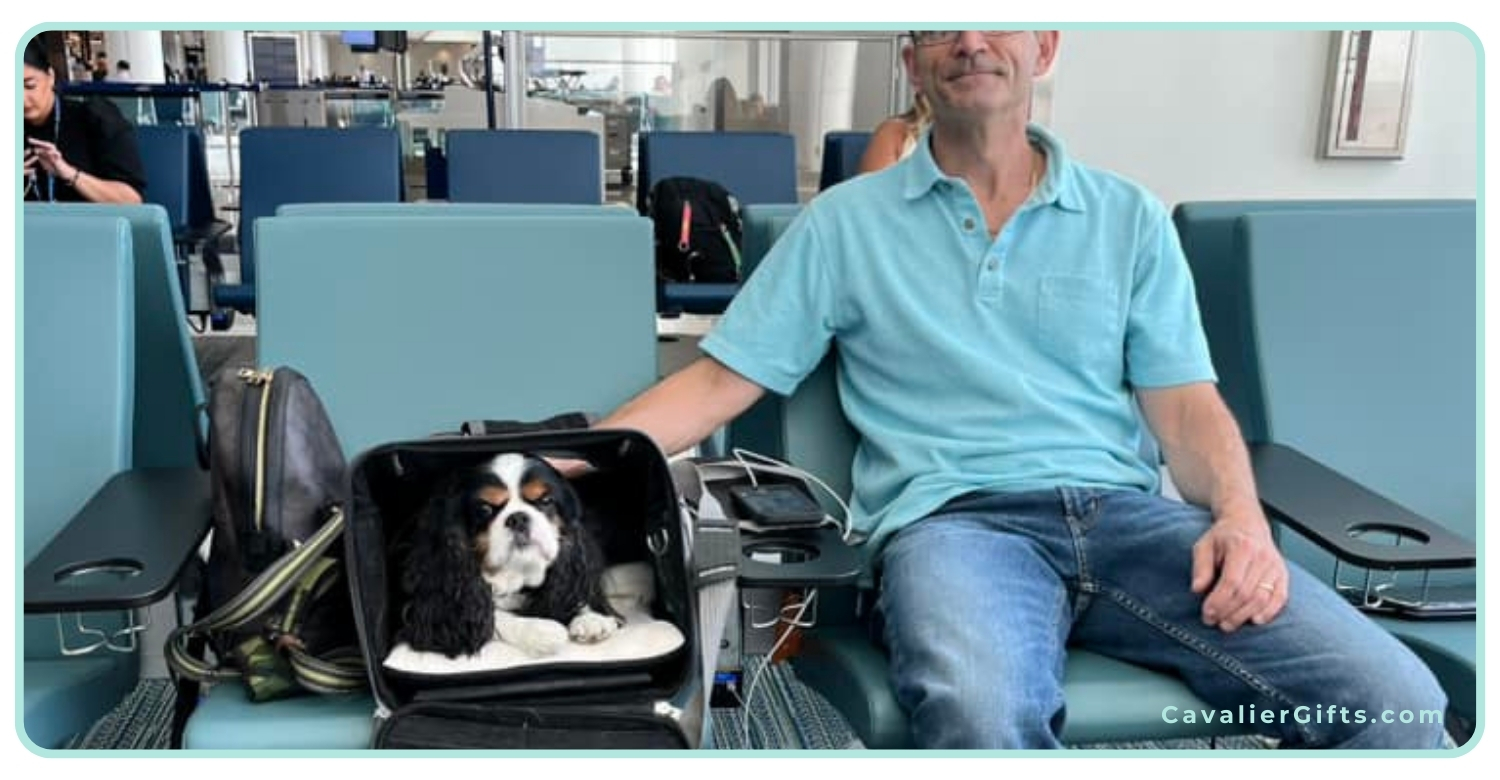

Preparing for Time in the Airport
Most airports have designated pet relief areas, but access to them depends on the layout of the airport and TSA procedures. Some airports have relief areas before security, while others have them post-security. Since Stewart will be crated during the drive and throughout check-in and security, I’ll plan ahead to find out if there’s an opportunity for a potty break before we go through security. If not, I’ll make sure he’s had plenty of time to potty before we leave for the airport.
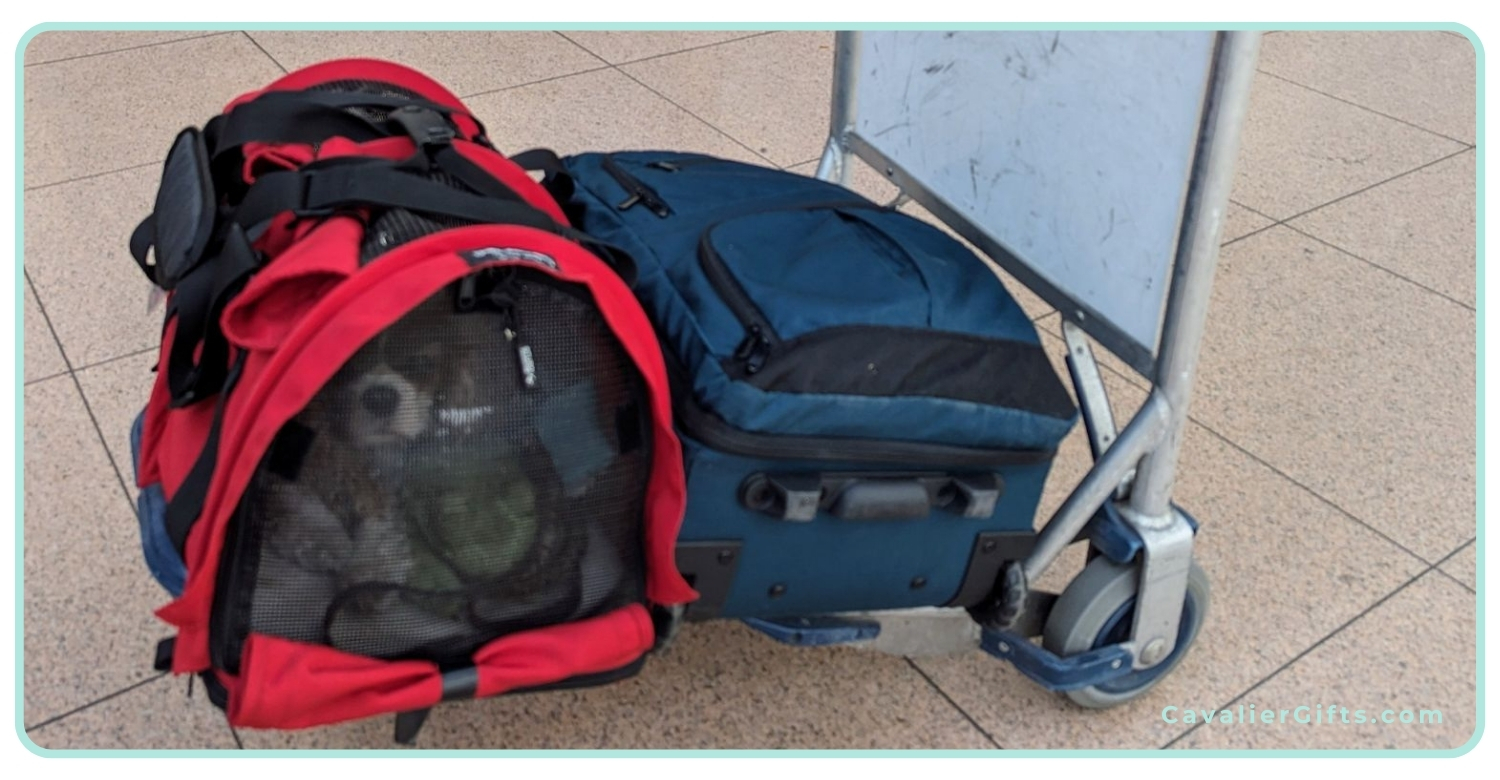

- Practicing Extended Crate Time – I’ve been gradually increasing the amount of time Stewart spends zipped up in his crate, so he’s comfortable being inside for longer periods.
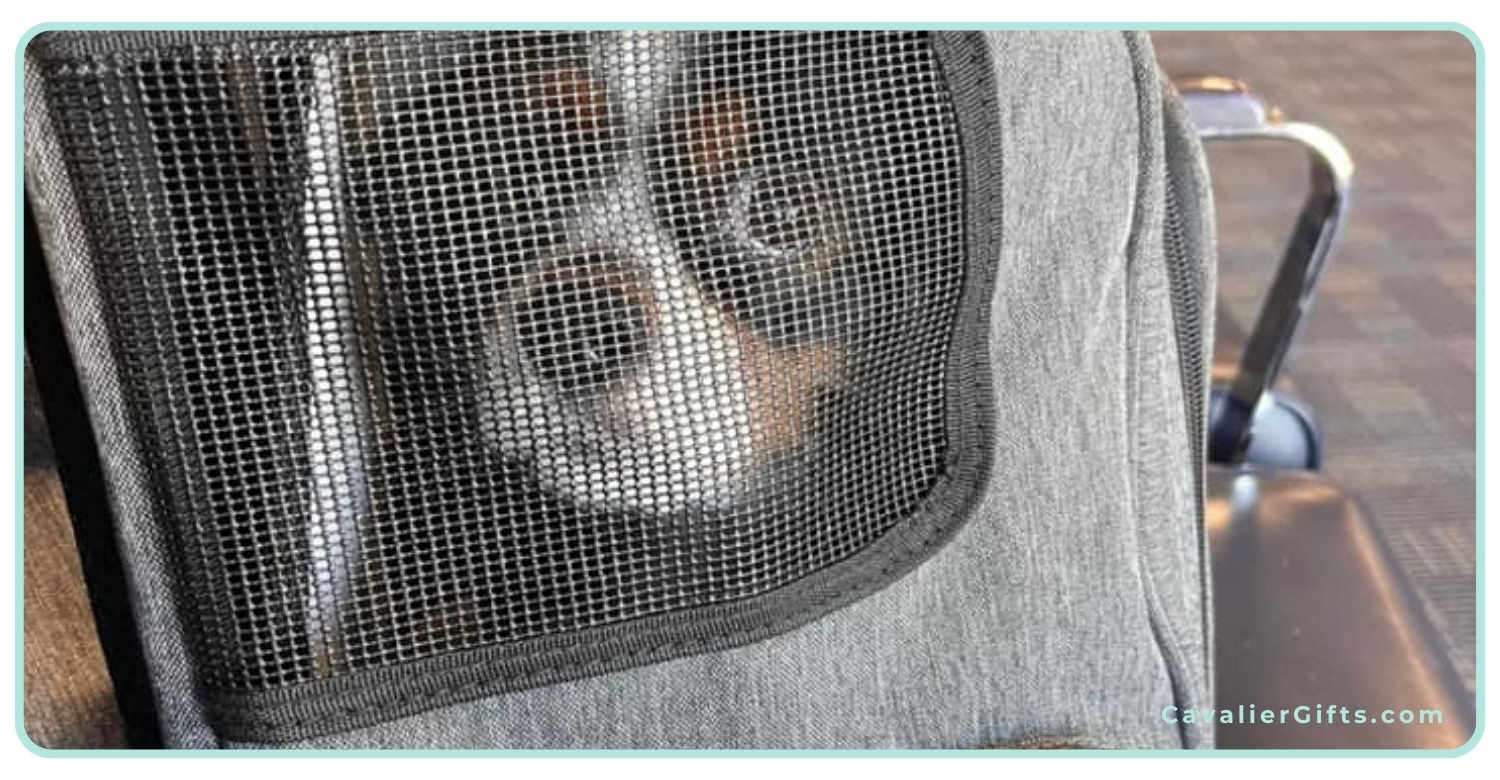

- Planned Potty Breaks – Since dogs can’t relieve themselves once past security, I’ll make sure to take Stewart to the airport’s designated pet relief area before heading to the gate. This is also why I teach my dogs how to potty on cue; it makes it easier to ensure they go when needed, especially in situations like this where time and access are limited.
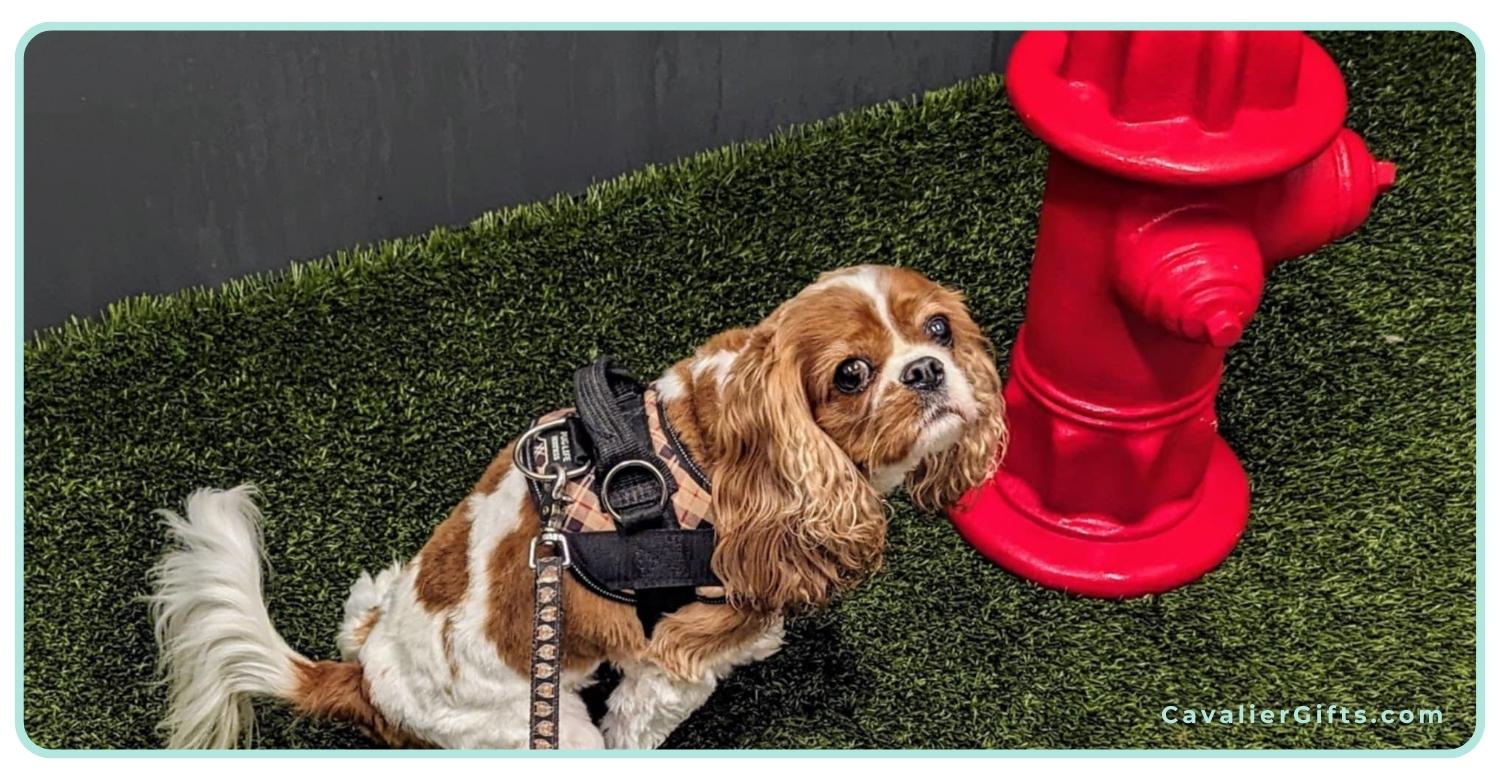

The Flight Itself
The actual flight is the final step in our preparation. Since Stewart will be in his crate under the seat for the duration of the flight, I want to make sure he’s as comfortable as possible.
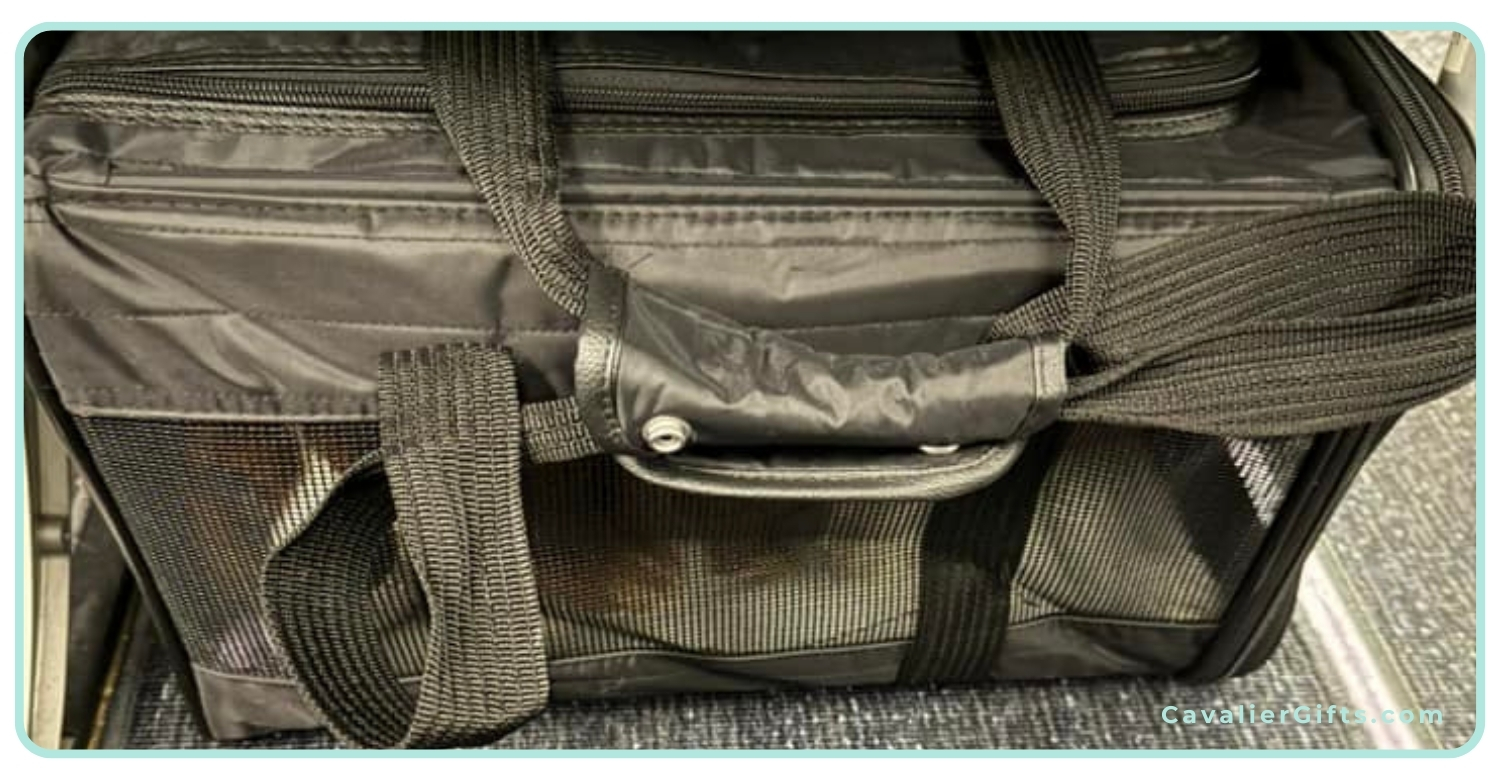

- Calm, Positive Associations – I’m making sure that his crate time is always associated with good things; treats, chew items, and a cozy space.
- Chews and Enrichment for the Flight –I’ll bring along a few safe chews and likely my slippers to provide comfort for Stewart during the flight.
- Staying Calm Myself – Dogs pick up on our emotions, so I’ll be focusing on staying relaxed and making this feel like just another routine adventure for Stewart.


Final Thoughts
Traveling with a Cavalier King Charles Spaniel on a plane takes preparation, but with gradual exposure and a positive approach, it can be a smooth experience. My goal is to make sure Stewart feels safe, confident, and comfortable every step of the way. While I’m still a bit nervous about my first flight in 30 years, I know that by preparing Stewart properly, we’ll both be ready for our adventure to Maine.
A big thank you to all of our Cavalier friends who sent us their travel photos! Don’t forget to follow them on social media.


Have you traveled with your Cavalier on a plane? I’d love to hear about your experiences in the comments!
|
|
        
|
        
|
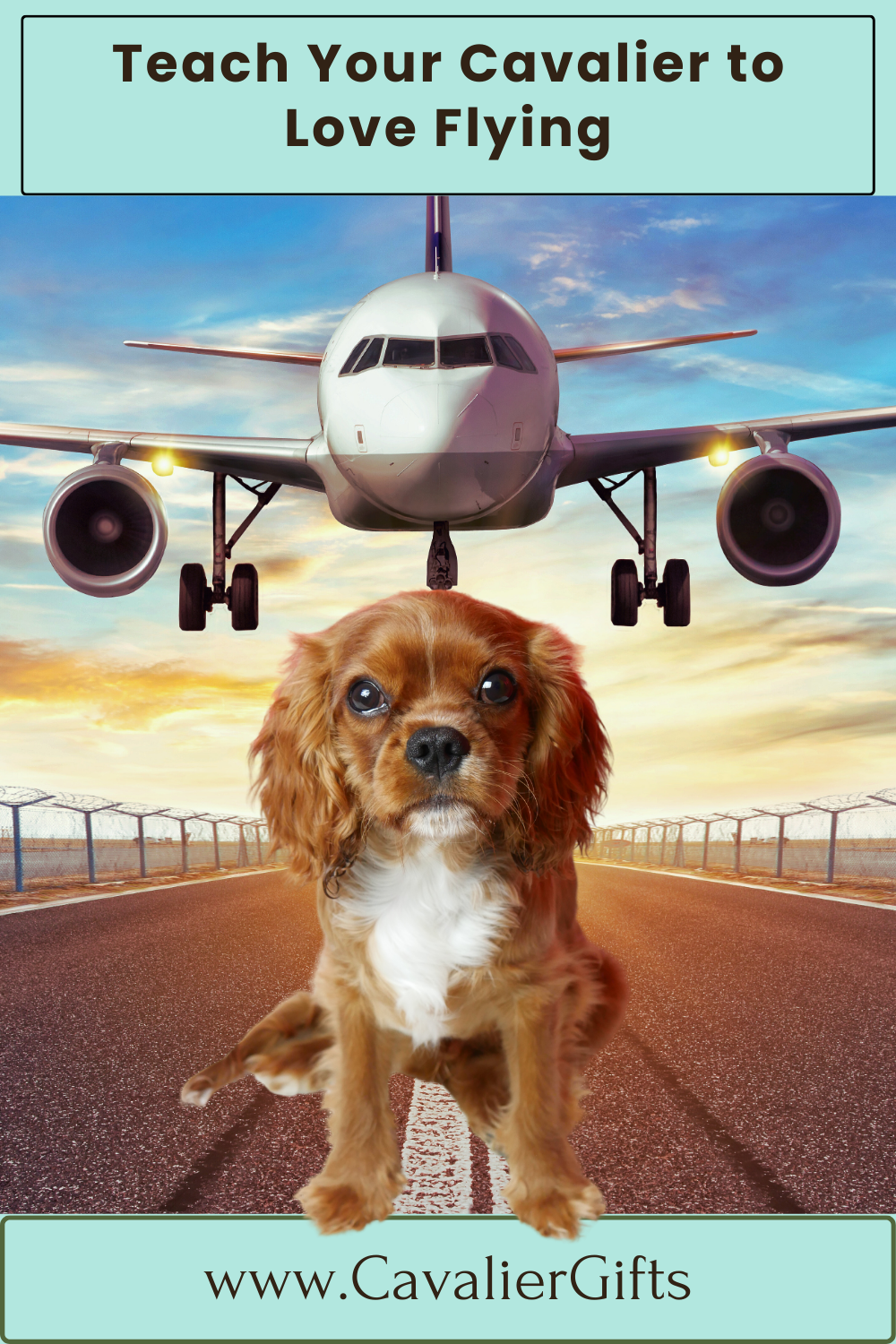

Google Ad Below
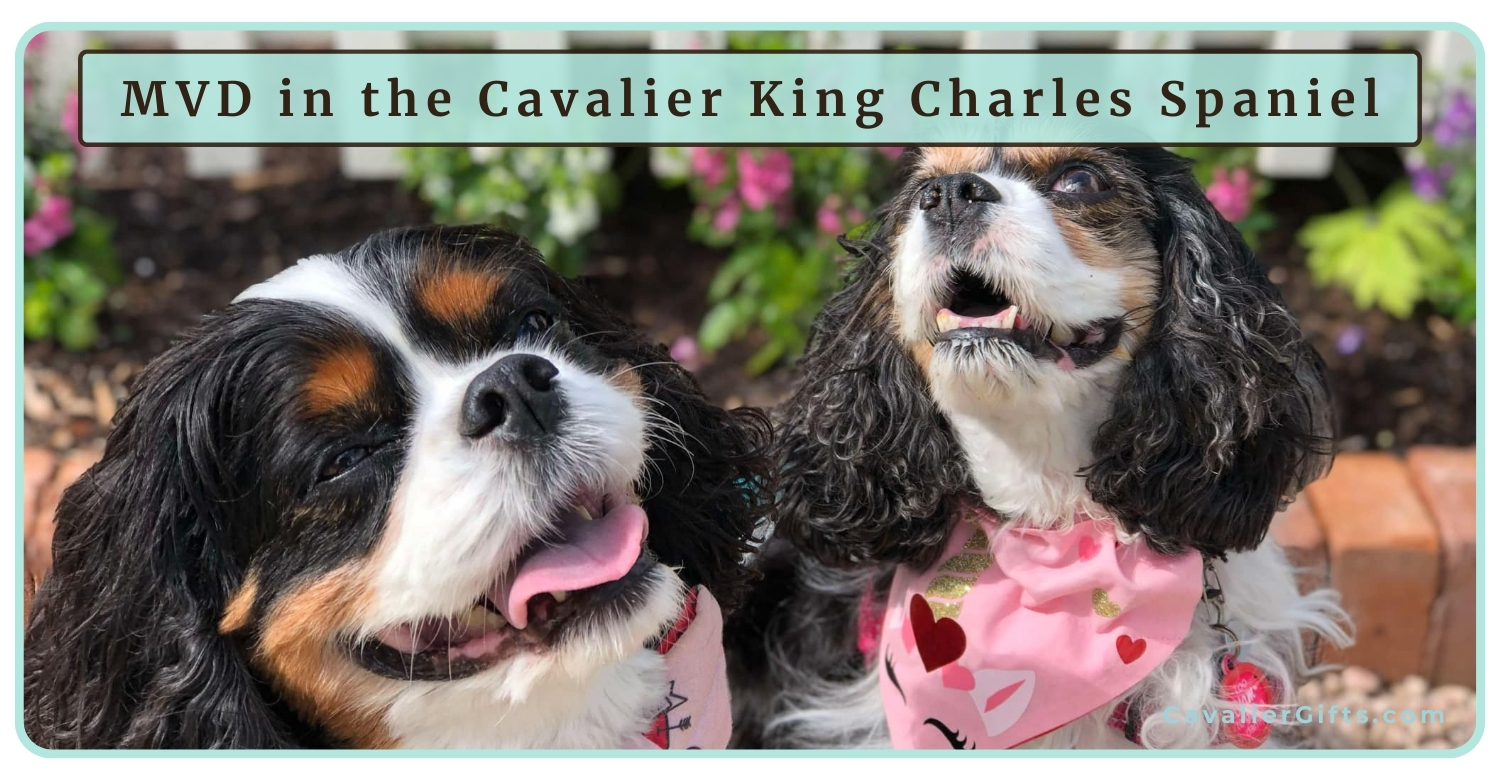

Mitral Valve Disease (MVD) in the Cavalier King Charles Spaniel (Early access for our Patreon community)
Cavalier King Charles Spaniel Heart Disease











Mitral Valve Disease (MVD) is something every Cavalier King Charles Spaniel parent should be familiar with. Sadly, this condition is extremely common in the Cavalier breed, but early awareness and proper management can greatly improve a Cavalier’s quality of life. In this blog, we’ll cover what MVD is, why Cavaliers are at risk, how the disease is staged, and which supplements can help support a healthy heart.
A heartfelt thank you to Lisa Davila, BS in Biomedical Science and Hospital Manager at Aggieland Animal Health Center in College Station, Texas, for helping me put together this article. Lisa has not only dedicated her career to animal health but has also been a loving mom to many Cavalier King Charles Spaniels. Her knowledge and experience are truly invaluable!
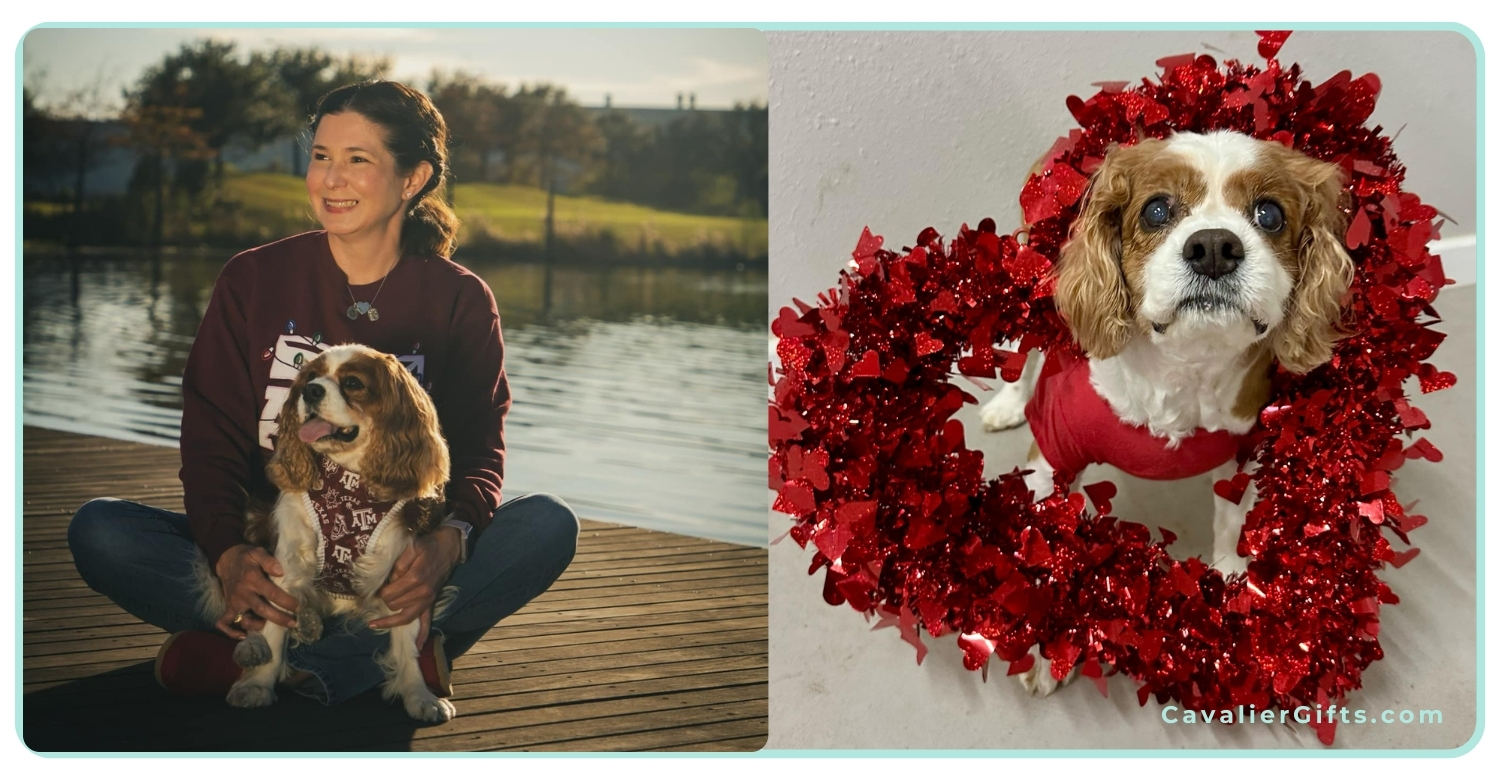

Understanding Mitral Valve Disease (MVD) in Cavaliers
Mitral Valve Disease (MVD) is a degenerative condition that affects the mitral valve of the heart. The mitral valve is responsible for ensuring blood flows properly between the left atrium and left ventricle. Over time, this valve can weaken and leak, allowing blood to flow backward into the atrium. This puts additional strain on the heart, eventually leading to heart enlargement and, in later stages, congestive heart failure (CHF).
MVD is considered a slow-progressing disease, but it varies from dog to dog. Some Cavaliers may live for years with a mild heart murmur, while others may progress more rapidly. Since MVD is so common in the breed, Cavaliers should be closely examined (cardiac auscultation) annually, to determine if they have a murmur. The presence of a murmur is often the first sign that a dog has degenerative valve disease.
Why Are Cavaliers at Risk of MVD?
Cavalier King Charles Spaniels are unfortunately predisposed to MVD. While any breed can develop valve disease, Cavalier King Charles Spaniels are at the greatest risk for developing degenerative mitral valve disease. Studies have shown that over 50% of Cavaliers develop a heart murmur by the age of 5, and by age 10, that number jumps to nearly 100%.Because MVD has a strong genetic component in Cavaliers, responsible breeding practices are essential. Responsible Cavalier King Charles Spaniel breeders ensure their breeding dogs undergo echocardiograms conducted by board-certified cardiologists. When considering a puppy, both parents should have cardiologist-issued heart clearances and be at least 2.5 years old at the time of breeding. Additionally, all four grandparents should be over the age of 5 and heart-clear. However, even with careful breeding, the risk remains high in the breed.
The Stages of MVD
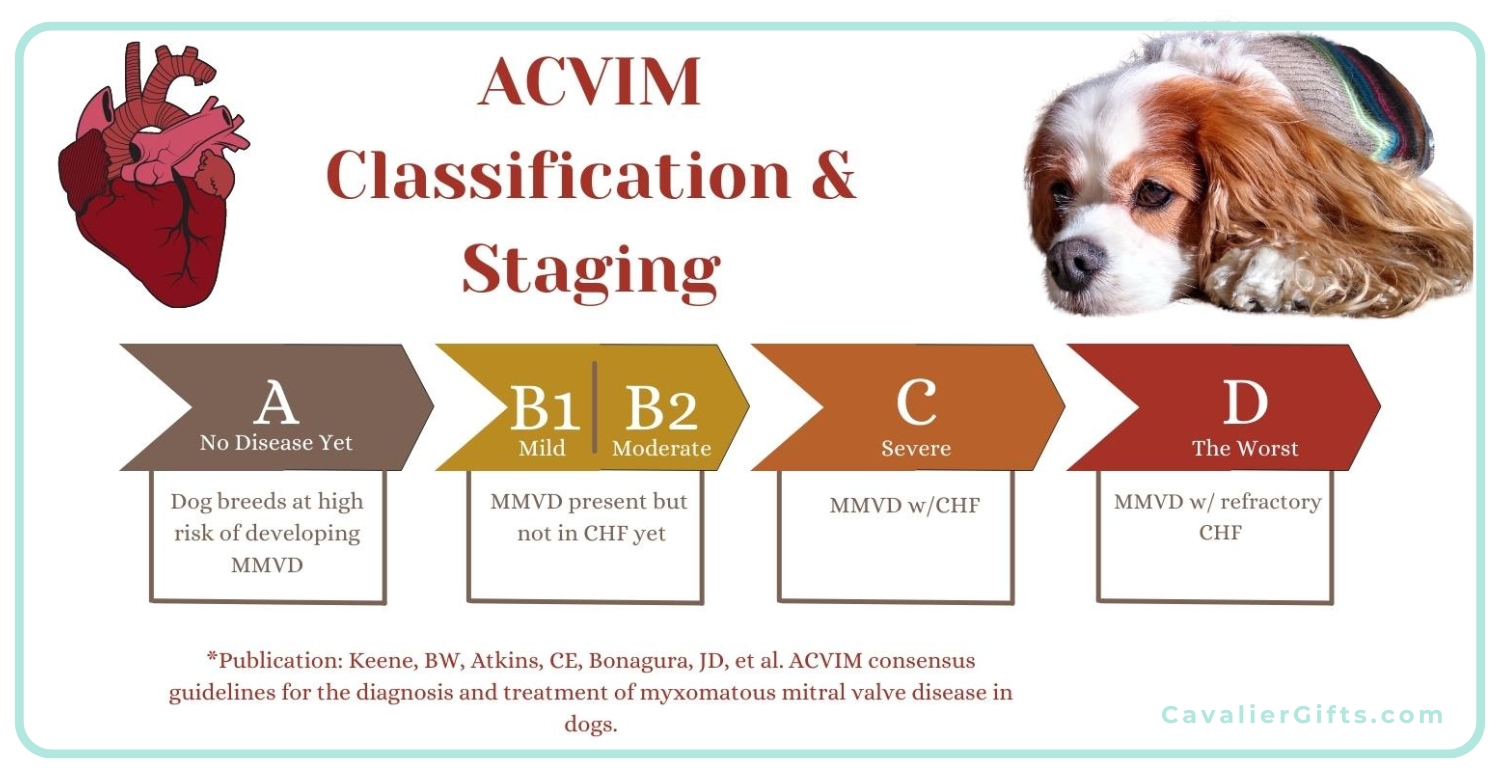

MVD is typically classified into different stages based on its progression. Early detection and monitoring are crucial to managing the disease effectively.
- Stage A – Dogs at risk for MVD but without any current signs (e.g., all Cavaliers are considered Stage A at birth because of their predisposition).
- Stage B1 – A veterinarian detects a heart murmur, but there is no evidence of heart enlargement on X-rays or echocardiograms.
- Stage B2 – A heart murmur is present, and imaging confirms heart enlargement. At this stage, medication such as Vetmedin (pimobendan) is often started to help delay the onset of congestive heart failure.
- Stage C – Congestive heart failure (CHF) is present, meaning the heart can no longer compensate for the disease. Symptoms such as coughing, lethargy, and difficulty breathing may be noticeable. Medications are necessary to help manage the condition.
- Stage D – End-stage CHF, where symptoms become harder to control even with medications.
Once a dog reaches Stage B2, most cardiologists recommend starting treatment to slow disease progression. Regular checkups and echocardiograms help ensure the right treatment plan is in place.
The Truth About Grain-Free Diets and Heart Disease in Cavaliers
With all the discussion surrounding Mitral Valve Disease (MVD) in Cavaliers, you may have come across concerns about grain-free diets and their potential link to heart disease. It’s important to separate the headlines from the facts when it comes to feeding our Cavaliers the best diet for heart health.
The debate about grain-free dog food largely stems from concerns about dilated cardiomyopathy (DCM), a condition where the heart muscle weakens, leading to poor function and potential heart failure. While DCM is a serious disease, the concern over grain-free diets has often been misinterpreted. The issue isn’t necessarily the lack of grains but rather the high levels of starchy carbohydrates like peas, lentils, legumes, and potatoes that are often used as substitutes in processed grain-free kibble.
Cavaliers are already predisposed to MVD, not DCM, which is a different heart condition with different causes. However, diet still plays a critical role in supporting heart health. The best way to provide a heart-healthy diet for your Cavalier is to focus on fresh, whole foods rich in high-quality animal proteins rather than relying on highly processed kibble, whether it contains grains or not. Read more about feeding your Cavalier a fresh diet.
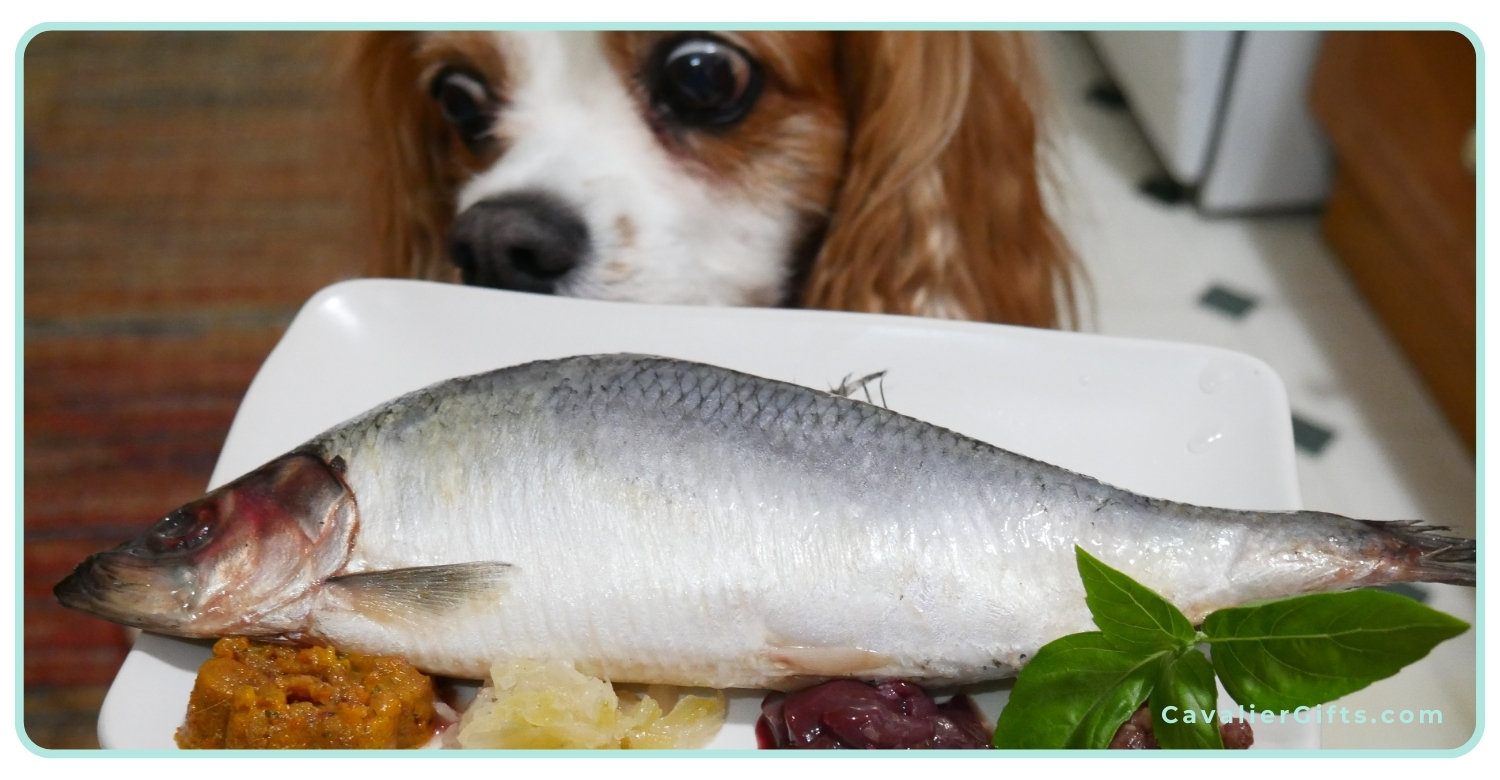

Dr. Karen Becker explains it best: “The problem with grain-free formulas isn’t the lack of grains. At a minimum, it’s the high level of starchy carbohydrates coupled with the extreme high-heat processing methods used to produce these diets.”
Rather than worrying about whether a diet is labeled as “grain-free,” focus on feeding a fresh, balanced diet with high-quality proteins, healthy fats, and low-glycemic vegetables. Rotating proteins and using whole-food ingredients can help ensure your Cavalier gets the nutrients they need to support a healthy heart.
If you’re unsure about your dog’s diet, seek guidance from a veterinarian with a strong background in canine nutrition, not just one who sells prescription diets in the clinic. A certified veterinary food therapist (CVFT) can be a great resource when designing a diet that supports heart health while avoiding unnecessary fillers.
A well-balanced, species-appropriate diet can play a key role in keeping your Cavalier’s heart strong and healthy for years to come.
Heart-Healthy Supplements for Cavaliers with MVD
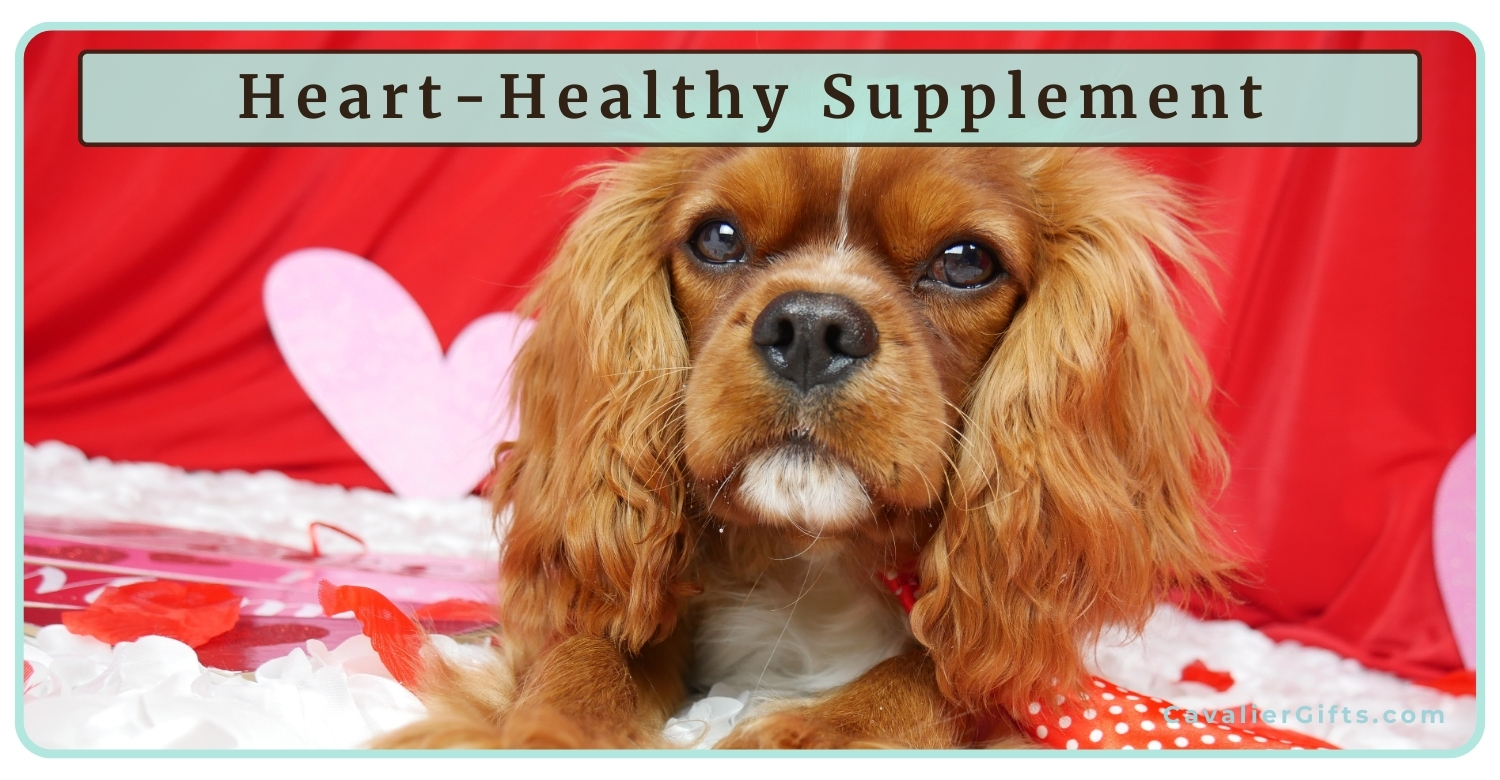

While MVD cannot be cured, a combination of medications, lifestyle management, and supplements can help support heart function and overall well-being. Below are some key supplements that may benefit Cavaliers with or at risk for MVD:
- MCT Oil (Medium-Chain Triglycerides) – Provides an alternative energy source for the heart muscle. One recommended brand is Natural Force Organic MCT Oil (1 tsp daily with food). Before giving your Cavalier coconut oil, please read this article on MCAD in the Cavalier.
- Amino Acids (Lysine, Methionine, L-Carnitine, Taurine) – Help maintain heart muscle contractility and serve as antioxidants.
- Omega-3 Fatty Acids – Reduce inflammation, decrease clot risk, help prevent heart muscle loss, and support healthy blood pressure. Nordic Naturals Omega Pet Liquid is a high-quality option.
- Vitamin E – Acts as both an antioxidant and anti-inflammatory.
- Magnesium – Plays a crucial role in heart muscle contraction and maintaining a healthy heart rhythm.
- Coenzyme Q10 (CoQ10) – A powerful antioxidant that supports heart function. Life Extension 100 mg capsules are a great choice.
Recommended Supplement Blends
If you prefer a multi-ingredient supplement, these options are formulated specifically for heart health:
- Rx Vitamins for Pets Formula CV – Includes amino acids, magnesium, Vitamin E, CoQ10, and hawthorn berry extract (safe unless the dog is on Vetmedin).
- VetriScience Cardio Strength Capsules – Similar to the Rx Vitamins formula but without hawthorn berry extract, making it safe for all MVD stages and medications.
Recap & Common Questions About MVD in Cavaliers
Mitral Valve Disease (MVD) is a serious but manageable heart condition that affects many Cavalier King Charles Spaniels. Early detection, responsible breeding, proper veterinary care, and supportive supplements can all play a role in keeping your Cavalier’s heart as healthy as possible.
What are the early signs of MVD in Cavaliers?
The first noticeable symptom is often a heart murmur, detected during a cardiologist visit. As the disease progresses, signs can include coughing, fatigue, labored breathing, and reduced exercise tolerance.
How long can a Cavalier live with mitral valve disease?
Many Cavaliers live for years after an MVD diagnosis, especially with early detection and proper management. While every dog is different, with the right veterinary care, medications, and supplements, Cavaliers can still enjoy a good quality of life.
What are the final stages of MVD in dogs?
In the later stages, MVD leads to congestive heart failure (CHF). Symptoms include severe coughing, difficulty breathing, lethargy, fainting, and fluid buildup in the lungs or abdomen. At this stage, medication and veterinary support are essential for comfort.
How do you treat MVD in Cavaliers?
Treatment typically includes veterinary-prescribed medications to support heart function and manage symptoms. Additionally, heart-healthy supplements, such as taurine, CoQ10, and omega-3 fatty acids, can provide extra support. Feeding a fresh, species-appropriate diet may also contribute to overall heart health.
Final Thoughts
A heart-healthy fresh diet, proper weight management, and the right combination of supplements can help support your Cavalier’s heart at any stage of MVD, even before a murmur is detected. Early intervention and regular veterinary care are key to helping our beloved Cavaliers live longer, healthier lives.
A big thank you to Lisa for sharing her knowledge on this topic! If you have any questions, feel free to ask, and don’t forget to check out Lisa and Jiminy on Instagram!
|
|
        
|
        
|
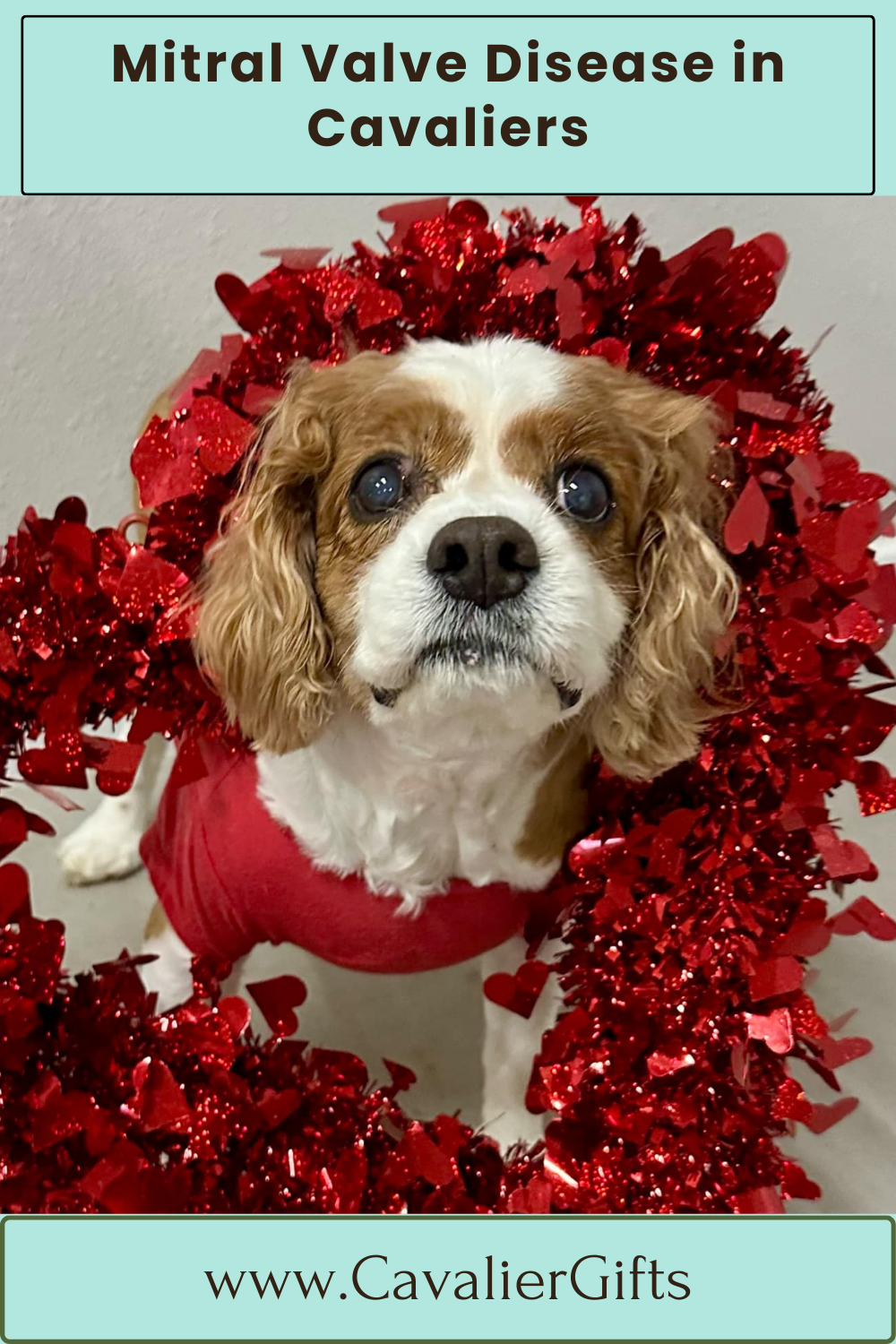

Google Ad Below
